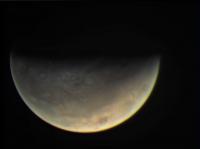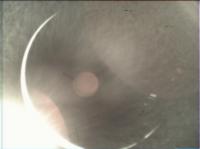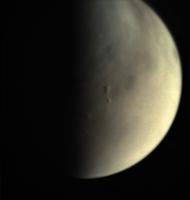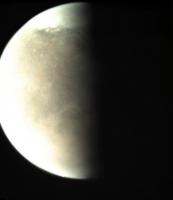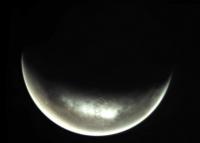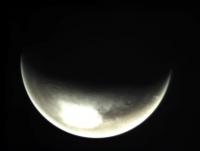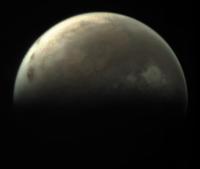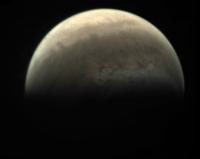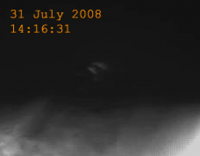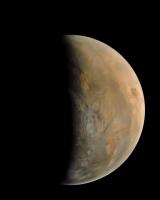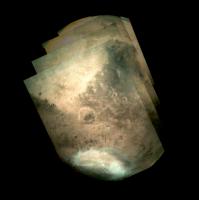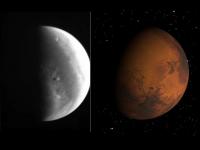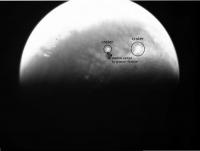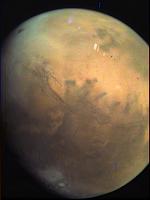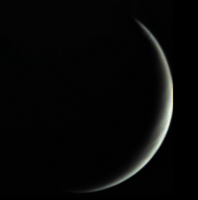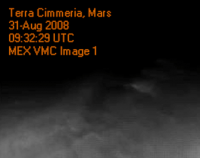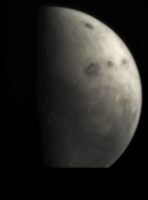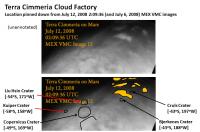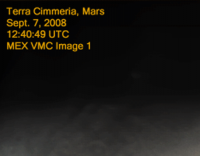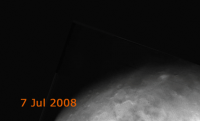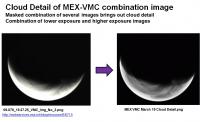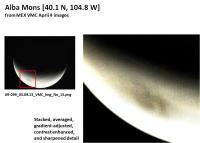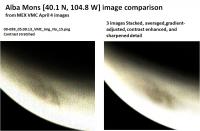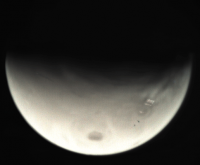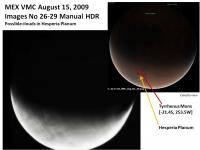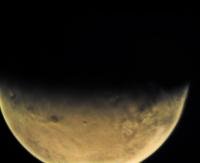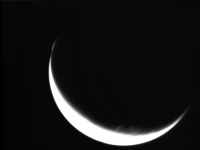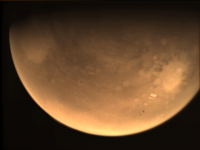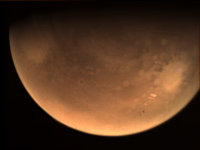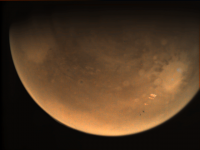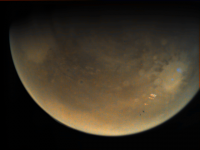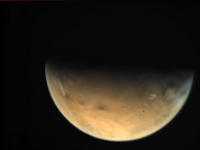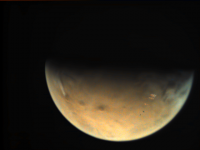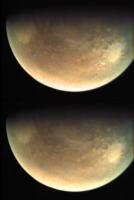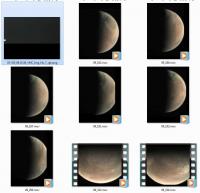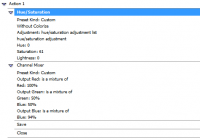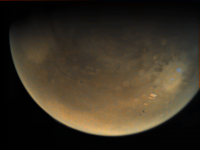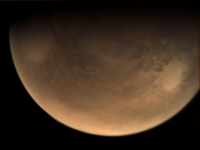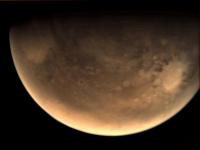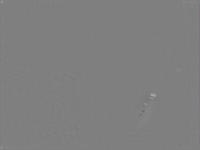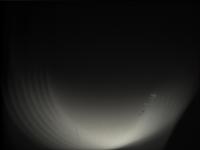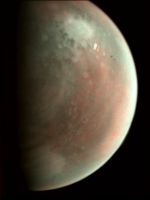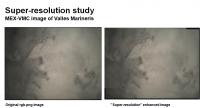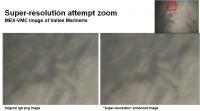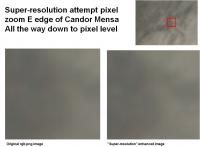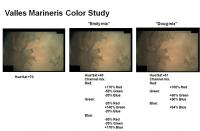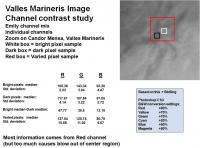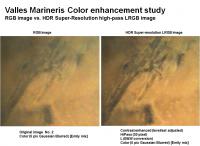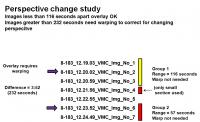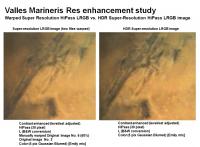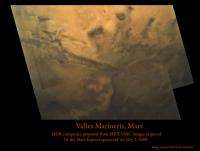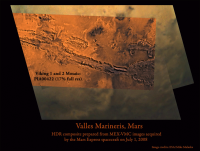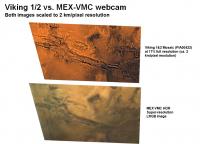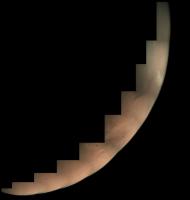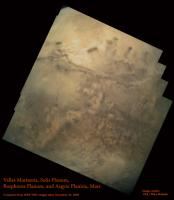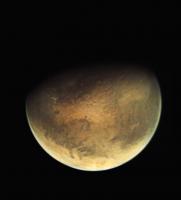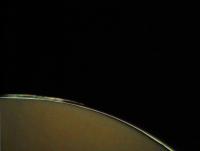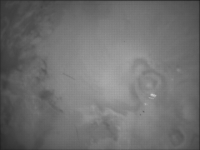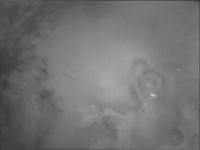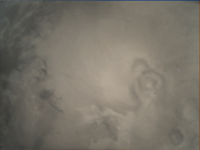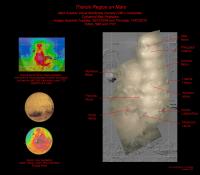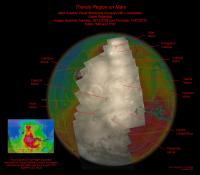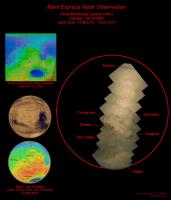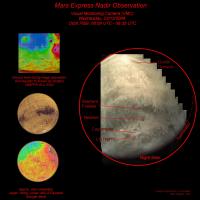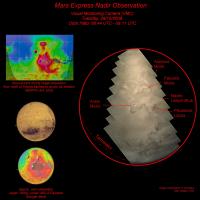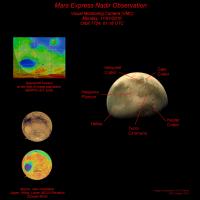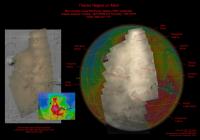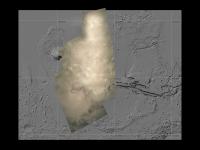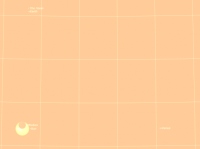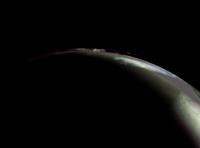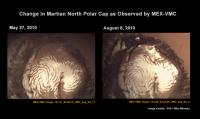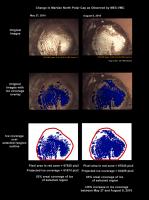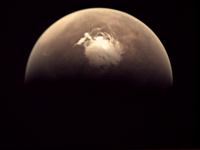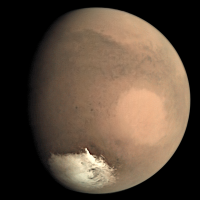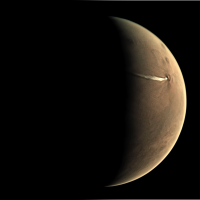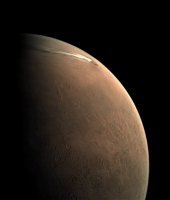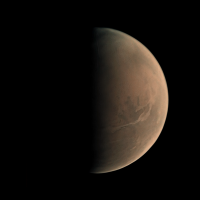Printable Version of Topic
Click here to view this topic in its original format
Unmanned Spaceflight.com _ Mars Express & Beagle 2 _ MEX VMC - Back on, and online!
Posted by: djellison Aug 22 2008, 01:58 PM
I heard about this 24 hours ago, and couldn't believe it - this is EXACTLY what has been missing from ESA. MASSIVE kudos to the ESOC MEX flight ops team for doing it
http://www.esa.int/SPECIALS/VMC/index.html
The last time I wrote a post and hit 'submit' at UMSF with a smile this big on my face, was when Oppy successfully got out of Purgatory.
Posted by: djellison Aug 22 2008, 02:57 PM
FWIW - I've attempted to debayer a tiny piece of image, by hand (using a 90x1 pixel selection again and again, to select alternate rows to cut them to a new layer - then again on columns, to split it into 4 layers. Then, I figured out which were the blue ones ( the darkest ) and from that established the red and the green. I then duplicated those layers to fill out the 2x2 pattern, and then copied into channels on a new image.
Hopefully someone will figure out a better method of doing this ![]()
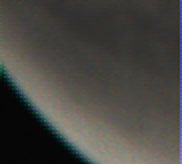
Posted by: djellison Aug 22 2008, 03:20 PM
I THINK I got a bit cleverer in making selections - this may or may not be accurate.
Posted by: Stu Aug 22 2008, 03:23 PM
ESA often get a hard time here for what they do - or don't do - but this is a BIG step in the right direction, and shows that ESA really are trying to do more with the wealth of data and material they have. As Doug said, congratulations to everyone involved, and here's hoping the site attracts a lot of attention, not just from dyed-in-the-wool spaceflight enthusiasts like ourselves, but from the public too. Will definitely be worth keeping an eye on, looking out for great images. I can hear my hard drive groaning already... ![]()
And yaaay! An ESA crescent Mars image at last!!! Great job! ![]()
Posted by: PDP8E Aug 22 2008, 03:24 PM
I always though that the Lunar Prospector team was absolutely CRAZY by not taking any type of camera to the Moon.
They did manage to bring an Alpha Spectrometer, Electron Reflectometer, Magnetometer, Neutron Spectrometer, and a Doppler Gravity thing-a-ma-jig.
Lunar Prospector was in a low polar orbit! and not a single image.
Then they decided to crash it into the Moon's south pole!
Any snapshot from a couple hundred meters would have been iconic.
And now, if you are not a Lunar scientist or a UMSF'er, the impact of Lunar Prosepector (pun intended) is ZERO
Note to spacecraft all designers: this non-science type of camera (MEX-VMC) is worth putting on all future space craft.
This is outreach at its best. This is how to capture the imagination of that next person.
This camera represents how we all pack for any trip ...DONT FOR GET THE CAMERA....and unmanned space craft take the most amazing trips!
Bravo to ESA and the MEXMARS Webcam! (...tons of images in the VMC archive...!)
Posted by: ugordan Aug 22 2008, 03:25 PM
Wow, great work, Doug. My method of making a Bayer mask in Photoshop doesn't exactly work as I'd hoped. A new approach is in order.
Here's a messed-around crescent view, with an ad-hoc color balance. Might be completely wrong.
Posted by: djellison Aug 22 2008, 03:32 PM
Spinning at 12rpm does kind of making taking pictures a bit hard - and if you do some research on the long term history of LP...it had NO money - none at all.
Doug
Posted by: Tman Aug 22 2008, 03:46 PM
But absolutely a gorgeous perspective!
Posted by: djellison Aug 22 2008, 04:06 PM
Oh boy oh boy
http://esamultimedia.esa.int/multimedia/vmc/2007-06-01_01.43-01.46/target0.html
Posted by: ugordan Aug 22 2008, 04:10 PM
I'm gonna give it a go at writing an app for automatically converting the raw files into RGB. Doug, have you figured out what the exact Bayer matrix looks like, starting from top left - I'd rather not try reinventing the wheel?
EDIT: Nevermind, I think I have it figured out.
Posted by: Juramike Aug 22 2008, 04:37 PM
Even better, it looks like they'd like submissions of your best images!
http://www.esa.int/SPECIALS/VMC/SEMANKXIPIF_0.html
BTW, here is the syntax for the filenames of the individual jpeg images:
For example: 08_213_14_25_16_vmc_img_no_8.jpg was:
* Taken in 2008
* On Day of the Year 213 (31 July)
* At 14:25:16 (hr:min:sec) UTC
* And is the eighth image taken in a series
Go ESA!
[Could they please do this for Venus too?]
Posted by: Paolo Amoroso Aug 22 2008, 04:42 PM
Does the Picasa logo on VMC images imply that they are hosted at the popular photo sharing site? If so, double kudos to ESA.
Paolo Amoroso
Posted by: ugordan Aug 22 2008, 06:00 PM
I've got a basic app going, it performs a rudimentary interpolation (if someone knows of a good de-Bayer algorithm, I'm open for suggestions) of the RGB data. When I clean it up a bit and sort out a command line interface I'll release it. Any requests in the meantime? ![]()
In the meantime, two gif animations:
A http://www.fileden.com/files/2007/9/14/1431389/crescent.gif (2.3 MB) and a partially overexposed north->south http://www.fileden.com/files/2007/9/14/1431389/flyover.gif (3 MB). Looks like the camera could benefit from a flatfield frame, if one were to be made. For some reason the RAW frames appear to be truncated in the ZIP archives, the last frame the most.
Posted by: Tman Aug 22 2008, 06:27 PM
Very nice Gordan!
What could that illuminated be behind the terminator http://esamultimedia.esa.int/multimedia/vmc/2008-02-14_22.49-23.20/target7.html
Something atmospherical or even one of the volcanos that get also already sunshine?
Posted by: Paolo Amoroso Aug 22 2008, 06:33 PM
Or maybe it's just a gallery generated with Picasa.
Paolo Amoroso
Posted by: Paolo Amoroso Aug 22 2008, 06:36 PM
Are you able to use the Celestia scripts? I downloaded a ZIP file with images and the corresponding script, placed them in the same folder and run the script with Celestia 1.4.1 under MacOS X. But nothing happens.
Paolo Amoroso
Posted by: tedstryk Aug 22 2008, 06:45 PM
http://www.unmannedspaceflight.com/index.php?showtopic=859&pid=124259&st=315&#entry124259
Posted by: ugordan Aug 22 2008, 07:06 PM
Nice catch, Tman! Looks like clouds to me, rotating into view over the terminator. Judging by the timestamps this would make the original imagery upside-down. Here's an animated gif (click to enlarge):
http://i108.photobucket.com/albums/n15/ugordan/clouds.gif
Posted by: djellison Aug 22 2008, 08:31 PM
Well that took AGES!
I'm happy to er.... 'beta test' it
Doug
Posted by: ugordan Aug 22 2008, 09:34 PM
To be honest, coding that particular bit was easy. I find providing a command line interface is more tedious and boring work. I'd still like to implement a better interpolation technique, something similiar to what digital cameras do.
Anyway, a couple of new takeouts, these have saturation kicked up. I don't know why the original images look so desaturated.
Posted by: Stu Aug 22 2008, 09:45 PM
Hmmm... why do the words "Kids", "new toys" and "Christmas" spring to mind...? ![]()
Posted by: djellison Aug 22 2008, 10:00 PM
I was thinking 'pig' and err...'poo'
Posted by: slinted Aug 22 2008, 11:44 PM
Kudos to the ESA and MEX teams! This is an exciting and inventive way to engage the public through existing hardware.
Great work ugordan, it looks like you have these files well in hand. If you're looking for more advanced de-bayering, http://www.cybercom.net/~dcoffin/dcraw/ might be a good reference. It includes 3 different methods beyond bilinear. In terms of the color, do we know if there are any spec or calibration documents online? Pixel responsivity would be mighty helpful.
Posted by: Astro0 Aug 23 2008, 03:57 AM
Paolo,
I think that the intention with the Celestia script is just to show where MEX was at the time that the image was taken. Reading from their website it says that this will help users determine what surface features are visible and the timing of the images available. While the images are available in a folder of the same name as the script, I don't see that they are related beyond that. Simply a way to compare the Mars Webcam images to a visualisation of the same region using Celestia.
Astro0
Posted by: Paolo Amoroso Aug 23 2008, 12:27 PM
For each image, the script calls functions for selecting Mars and tracking it, which are supposed to bring the planet in the field of view. But I see only an empty star field. Also according to the script, the "M" and "N" should move to the next or previous image location, but this doesn't work. I don't see the instructions that the script should display, either.
Hmmm... I'd better check whether the version of Celestia I am using was compiled with support for the Lua language required by the VMC scripts.
Paolo Amoroso
Posted by: ugordan Aug 23 2008, 02:26 PM
A dodgy first version of the tool: vmc2rgb_v01.zip ( 37.97K )
: 1760
vmc2rgb_v01.zip ( 37.97K )
: 1760
It takes an input RAW file and writes out a PNG with the same filename and adds a "_rgb.png" suffix. For example:
will produce "08-183 12.23.52 VMC Img No 6_rgb.png". Note that in windows command line prompt you need to use double quotes for filenames containing spaces such as these. The end qoute is not strictly necessary. If you associate the *.RAW file extension to the program (or if you just drag-n-drop the image on the program icon) you don't have to worry about this.
Also, the tool is dumb in that it will interpret any file you feed it as a 640x480 raw stream. I suppose I could make it grab PNGs as well sometime.
I'll consider adding an improved interpolation as slinted suggested later. I've done some reading and apparently the Bayer filter outputs have a fair amount of inter-channel "crosstalk" that causes saturation to go down which might explain the low saturation in these images. This is usually automatically handled by digital cameras with internal saturation boosting, in this particular case Photoshop's your friend.
Posted by: Paolo Amoroso Aug 23 2008, 02:34 PM
I've checked, the Celestia version I am using does support Lua.
Paolo Amoroso
Posted by: Astro0 Aug 23 2008, 11:32 PM
Paolo, see if you can download Celestia 1.5.0. It runs the .cel script with no problems (perhaps a little slow to start, but then it hums along).
Astro0
Posted by: jekbradbury Aug 24 2008, 02:28 AM
For those who would rather not manually run each of the 80-odd VMC pics through the demosaicker, here is a 16Mb zip of all VMC images to date demosaicked and PNGified with vmc2rgb:
http://www.filedropper.com/mexvmc
These images remind me of the early Mariner pics of Mars: albedo features, maybe a mountain or two, with some craters thrown in. It's also interesting how the CCD has a Bayer filter, yet the main use of the camera did not require color capabilities.
Posted by: Paolo Amoroso Aug 24 2008, 02:35 PM
This did the trick, thanks. I upgraded to Celestia 1.5.1 and the VMC script worked. At first it didn't occur to me to try an upgrade because the script didn't mention dependence on any specific version of Celestia.
Paolo Amoroso
Posted by: Tman Aug 26 2008, 07:16 PM
The VMC public gallery has opened http://www.esa.int/SPECIALS/VMC/SEM3FR0SAKF_mg_1.html
Posted by: Stu Aug 27 2008, 04:13 PM
In advance of him joining UMSF I've been asked to pass on greetings and a couple of messages from Thomas Orsmton, who is the "VMC team coordinator from the technical side on the Mars Express Flight Control Team":
"...all of us here on Mars Express have been very impressed with the work being done by members on the forum and we've been downloading and playing with ugordons' colour extraction application too. "
... and...
"...I would be very grateful if you could pass on the message on the forum that all of us on Mars Express are really pleased with what people on the forum are doing and would strongly urge them to send their results to us at vmc@esa.int, with the details at the bottom of this page: http://www.esa.int/SPECIALS/VMC/SEMANKXIPIF_0.html. "
So there you go! Nice to know all of your efforts are appreciated, you Imagemages out there, and keep up the good work! ![]()
Posted by: ormstont Aug 27 2008, 07:18 PM
Thanks to Stu for passing on the message, I'm registered now and can pass on my thanks to you all once more for the wonderful work you've been doing with our VMC images. I hope that through this forum I can keep in touch with you all as the VMC project continues, with this instrument we're just the tool, you'll be making the discoveries! Especially the users here on Unmanned Spaceflight forum have given one of the warmest welcomes to this new initiative so it's great to be in touch with you directly.
As Stu passed on, I'd really urge you to send in your results to vmc@esa.int - Daniel runs our website at ESOC and we'd love to publish your VMC results along with the routine updates as we get them from the spacecraft. With him looking after the website I look after the camera (as much as I can - my 'day job' is power and comms on the spacecraft) so if you've got any suggestions on what we should do with it that might help us too (although we are heavily limited by operational constraints - with the wonderful results we get from our science instruments the science mission must come first!).
I'm open to questions on the e-mail or here on the forum - if we keep the images coming you can help keep VMC fresh with new processing techniques, image analysis and ideas for the future. VMC is meant to be everyone's camera, I hope that despite our somewhat basic images we can still get some wonderful results.
Posted by: imipak Aug 27 2008, 09:10 PM
I'm only an "armchair UMSFer", with no image manipulation skills, but as such I'm delighted to see images flowing from ESA, and I'm equally delighted to see your post. Welcome aboard, ormstont!
Posted by: Juramike Aug 28 2008, 04:57 AM
Here is an GIF animation I made from a sequence of MEX VMC images taken on July 31, 2008. (http://esamultimedia.esa.int/multimedia/vmc/2008-07-31_14.16-14.30/index.html).
I think it shows a cloud near the terminator under the changing lighting conditions of sunrise:
(Anybody recognize the location? I couldn't figure it out!)
-Mike
[EDIT 9/16/2008 00:04 EDT: OK I think this cloud is over the highlands near Kepler Crater at [-47S, 220W] in Terra Cimmeria]
Posted by: Paolo Amoroso Aug 28 2008, 11:29 AM
Speaking of ideas, are there any operational constraints that prevent imaging Phobos or Deimos with VMC?
Thanks to you and the MEX team for the great images and opportunities.
Paolo Amoroso
Posted by: ormstont Aug 28 2008, 02:15 PM
Phobos and Deimos would both be fun targets, the biggest problem is the distance between them and the spacecraft (and the relatively low resolution of VMC). Even with our high-altitude pericentre (~10,000 km) we'd have issues imaging Deimos (as it's quite a bit further out). We do come pretty close to Phobos at times but on those opportunities we usually use our primary science instruments to observe (see some results of the recent campaign here: http://www.esa.int/SPECIALS/Mars_Express/SEM5H48N9JF_0.html) and VMC is not allowed to be ON with other instruments. That said I'll keep my eyes out for any encounters where we could try something with VMC.
Maybe someone on the forum would like to do a quick back-of-the-envelope calculation to see at what range we'd start to be able to resolve the moons. This would of course rely on working out the resolution of VMC from Martian features, which again might be a fun job for someone if anyone fancies it!
Posted by: chiron Aug 29 2008, 11:07 AM
Hi everybody
I worked the last days on a program for automatic conversion of the VMC images.
The version i provieded on my website at http://www.bernd-leitenberger.de/download/vmc.zip
The Help is missing but will added in the next update.
Whats working is:
- Demosaiking of the bayer mask
- Removing of Hot Pixels
What must be made better is :
- Correction of the color and saturation
- Better debayer Filter (still big differences between near pixels)
I recommend to process the files (multiply can be selected in the open dialog) by it and then use a image processing tool to adjust saturation and to do an unsharp mask.
When someone has more experience with image processing i would be glad if he can provide me with an better debayer algorithm
The program runs under Windows XP , i think also under other Windows version from 98 up.
Posted by: tedstryk Aug 29 2008, 02:03 PM
I had a go at the July 29, 2008 dataset. Man, this is some tough stuff to work with!
Posted by: ormstont Aug 29 2008, 05:41 PM
Tough stuff to work with indeed ![]() makes it all the more impressive when you produce something like that image - it's going up on the wall in the control room for sure! Great work there Ted, I'll ask Daniel to put it on the website as soon as we can (although with Rosetta's Steins flyby next week he's pretty busy!).
makes it all the more impressive when you produce something like that image - it's going up on the wall in the control room for sure! Great work there Ted, I'll ask Daniel to put it on the website as soon as we can (although with Rosetta's Steins flyby next week he's pretty busy!).
Got two observations from last week that we've just downlinked from the spacecraft too, and there should be 4 (I believe) more over the weekend...but I'm taking a brief holiday Monday and Tuesday so they might have to wait til Wednesday I'm afraid! Keep up the good work!
Posted by: tedstryk Aug 29 2008, 06:42 PM
Thanks! I am headed out on vacation, but I will try some more images when I get back on Monday.
Ted
Posted by: Juramike Aug 30 2008, 02:24 AM
Assembled mosaic from June 22, 2008 series of images (specifically image 3, 6, 9, and 12):
[EDIT 20080916 00:14 EDT: This is an image of Huygens Crater at center[-15S, 305W] above the bright Hellas Basin (lowest point) and the Terra Sabaea is to the right, and the dark zone to the NE of Huygens Crater is Syrtis Major.]
-Mike
Posted by: Juramike Aug 30 2008, 03:56 AM
Handy little guide and detailed explanation of the outreach plan for the MEX VMC:
http://esamultimedia.esa.int/multimedia/esoc/Mars_Webcam.pdf
-Mike
Posted by: JTN Aug 30 2008, 04:15 PM
"the latency makes this camera the most recent available view of Mars from any spacecraft"
"It is also possible to add files containing the raw pixel values from VMC, as part of the future website developments [...]"
They slew the spacecraft specially for
"The [VMC] design has flown on several ESA missions to date, including Ariane 502, Cluster-II, XMM-Newton and INTEGRAL. VMC cameras are currently also scheduled to fly on the Herschel-Planck ESA astronomy missions."
Posted by: Paolo Amoroso Aug 31 2008, 01:49 PM
It would be useful for the VMC site to have an RSS feed for announcing new image releases.
Paolo Amoroso
Posted by: ormstont Sep 4 2008, 03:56 PM
Sorry for being a bit quiet - as you can probably see from the ESA website we're going full steam ahead on the blog for the Rosetta Steins flyby tomorrow. Daniel who maintains the VMC website is hoping to get the latest images up soon. In particular you should take a look at the ones from the 29th August - there's something really strange on those pictures. Seems to be large (~100km is my rough calculation) and very bright, casting a dark shadow on the planet and the shadow is detached from the object. Doesn't seem to be anything on the map there so I'm puzzled...ideas on a postcard?!
P.S. Thanks for the idea for the RSS feed - we're definitely thinking of implementing that as soon as we can so you can get reminders of new images available.
Posted by: Stu Sep 4 2008, 06:43 PM
re your "mystery object"...
http://www.youtube.com/watch?v=W8JLqsbK5V0
![]()
Posted by: ormstont Sep 5 2008, 11:26 AM
Definitely hoping for Martians (then we'd have something to blame spacecraft anomalies on!) ![]() We're hoping to get the images up today...latest probably Monday - sorry to make you all wait!
We're hoping to get the images up today...latest probably Monday - sorry to make you all wait!
Posted by: ormstont Sep 5 2008, 02:54 PM
Ok...image gallery is online on the website, along with a couple of public submissions from UMSF members (more to come I'm sure!). We've got some more standard image galleries from August and September still to put online but these will come next week after things with Rosetta have calmed down.
Really interested to see what you make of this object!
Posted by: djellison Sep 5 2008, 03:10 PM
That is unusual. At first I thought it might be a moon/shadow issue, but that close to the terminator the geometry is totally wrong. It's so close to the terminator, that can't be very tall.
It's a nice challenge - I like it.
Posted by: Paolo Amoroso Sep 5 2008, 03:11 PM
Any Phobos/Deimos solar eclipses at the time the images were taken? However, the images probably span a time interval a bit too long.
Paolo Amoroso
Posted by: Stu Sep 5 2008, 03:17 PM
I may be wrong (probably am) but think this might be the area...
More than prepared to be proved totally wrong!
EDIT: hmmm, looking at other images in the new release batch I'm not so sure. Fun to try tho.
Posted by: remcook Sep 5 2008, 03:40 PM
cool, looks like a volcano eruption ![]() it's not a cloud?
it's not a cloud?
what's the artifact right above it in Stu's image (near the limb, the rectangle thing...looks like a a line of a few pixel copied several times.)
Posted by: ustrax Sep 5 2008, 03:55 PM
I've been far away for so long that I've become a sceptic... ![]()
Sorry but to me it looks like an optical illusion...no shadow casted by the apparent object, it looks to me like the shadow is from an elevation on the ground and the supposed "object" is a crater, you can see by going through the images that the shine varies and if you turn a picture 90º you loose that impression of something hovering over Mars...
Hope I'm wrong... ![]()
Posted by: Stu Sep 5 2008, 03:57 PM
How about a meteoroid impact that sent up a big dust cloud? Unlikely, I know, but wouldn't that be cool? ![]()
(This is where someone from MRO, Odyssey or MEx butts in and says "Well, actually, we did see something but we weren't going to say anything yet..." ![]() )
)
EDIT: An "optical illusion"? Okay, where's the REAL Ustrax? What have you done with him?!?! ![]()
Posted by: ustrax Sep 5 2008, 04:06 PM
I'm here... ![]()
This is what I mean:
Looks to me that the brightness of the crater on the right and what I call crater on the left looks, going through the images, the same from one to the other...
But I may be taking too much http://portalmascota.net/images/CANIDRIL.jpg...
Posted by: Paolo Amoroso Sep 5 2008, 04:09 PM
Isn't the area too far from the terminator to have such a prominent shadow?
Paolo Amoroso
Posted by: ustrax Sep 5 2008, 05:02 PM
In this http://esamultimedia.esa.int/multimedia/vmc/2008-08-29_09.37-10.35/target19.html it looks to me that the shadow is derived from elevations on the terrain to the left and the "object" has fainted in a considerable way.
Posted by: ormstont Sep 5 2008, 05:53 PM
Just to put my two cents in, you're right that the "object" fades a lot towards the end of the observation. It could well be that we're seeing something like the face on Mars - just a combination of light and shadow that looks like something we want to see. Nonetheless there aren't any major features I can see on the Mars map that would give rise to such a large flare/shadow. In ustrax's plot the crater identified is (I believe from looking at the Celestia file) Copernicus.
Using Ian Musgrave's Registax techniques he describes here http://astroblogger.blogspot.com/2008/08/webcams-over-mars.html, combined with ugordon's colour processing script, I wonder if it's possible to clean up the image and see if we can place it more precisely on a map of Mars. Would be great to see what more it could teach us!
P.S. Top theories so far include trick of the light, cloud or (a long shot, but a cool one) an impact event plume...
Posted by: ustrax Sep 6 2008, 10:12 AM
dear Ormstont, I am sorry to be a bit limited in terms of software for the moment but if that carter is indeed Copernicus then, looking at Google Mars, I see a bright patch to the right of the crater (marked) that could be the "culprit"...assuming that I am getting the right orientation and scale... ![]()
Posted by: ugordan Sep 6 2008, 07:02 PM
It definitely appears to be atmospheric as the shadow moves below it (click to enlarge):
http://i108.photobucket.com/albums/n15/ugordan/cloud2.gif
It seems to have dissipated at the end. Based on the rough 100 km size estimate I get a height in excess of 100 km (around 110 km, but the uncertainty is rather large) if my back-of-the-envelope calculation is right using this 3x magnified bit:
If it's an ordinary cloud, what would make it so circular at that altitude and would it dissipate quickly in sunlight? If it's an impact plume, wouldn't we expect a darker color and much lower and more persistent plume?
Posted by: Juramike Sep 6 2008, 07:40 PM
Nice animation, Gordan!
As you've shown, the shadow seems much longer in the earliest images, just what you'd expect as the sun peeped up over the horizon.
-Mike
Posted by: ustrax Sep 6 2008, 08:11 PM
I keep my thought after seing your animation...
the shadow seem to me to be originated on an elevation to the right, as the sun decreases in the horizon the shadow decreases and so does the brightness in the circular feature. I keep my guess: they are not related...
Posted by: Paolo Amoroso Sep 6 2008, 08:12 PM
The movement of the feature suggests that a few hours earlier it was in the night side of Mars beyond the terminator, possibly looking like the bright terminator projections observed telescopically, e.g. the http://www.uapress.arizona.edu/onlinebks/mars/fig10.jpg (from http://www.uapress.arizona.edu/onlinebks/mars/chap06.htm).
Paolo Amoroso
Posted by: ugordan Sep 6 2008, 08:43 PM
You do realize it would have to be an awfully big topographic high, don't you? We're talking about objects 100 km in size and the shadow is something like twice that size, even well past the terminator. That would put Olympus Mons to shame, no?
Furthermore, the shadow isn't simply getting shorter, it's actually disappearing at the same time the bright circular object (let's call it 'cloud' for discussion's sake
Posted by: TheChemist Sep 6 2008, 08:47 PM
The typical anti-Ustrax that posts lately here. Now he sees an inverse abyss
Posted by: ustrax Sep 6 2008, 09:21 PM
I DON'T want Oppy headed towards Ithaca!
(See what I mean?...
No I don't...
Posted by: ugordan Sep 6 2008, 09:23 PM
Congratulations and welcome to the club known as The Pessimist. I hope you'll enjoy your stay!
Posted by: ustrax Sep 6 2008, 09:27 PM
Thanks but I believe it won't be long enough to be enjoyed in its full splendor...
Posted by: siravan Sep 6 2008, 11:08 PM
How do you calculate the height? My back-of-envelop calculation based on the ratio and of the shadow to the object size and its distance from the object is more consistent with an altitude half the object size (50 km if the diameter is 100 km).
Posted by: ugordan Sep 6 2008, 11:39 PM
Yep, it appears I messed up the calculation of (at least) illumination incidence angle using the shadow shape, I did an inverse tangent of a/b instead of inverse cosine of b/a. That, by itself, lowers the end result to some 80-ish km, which might still be wrong. 110 km was no doubt suspicious, being at upper fringes of the atmosphere.
Posted by: Paolo Amoroso Sep 7 2008, 02:40 PM
The date and time on the drawing can be read clearly only on the printed edition of the book: "1890, July 6d 9h 25m P.S.T."
Paolo Amoroso
Posted by: ugordan Sep 8 2008, 09:50 PM
Here's a new version of VMC2RGB, this time implementing the adaptive Homogeneity-Directed interpolation, snatched from dcraw (algorithm was based on the work of Keigo Hirakawa, Thomas Parks, and Paul Lee) as slinted suggested earlier. It's not a groundbreaking improvement and your mileage may vary, but if you take care of how you process the images wou might end up with slightly sharper images. See below for 2x enlarged inset comparing the old and new algorithm, with identical processing in Photoshop: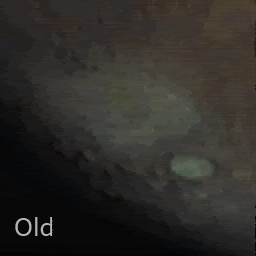
The target image in question was greatly boosted in saturation and sharpened so it's pretty noisy, but shows more details:
Download it here:
 vmc2rgb_v02b.zip ( 40.37K )
: 937
vmc2rgb_v02b.zip ( 40.37K )
: 937EDIT: I discovered a bug when using the new algorithm that clips some saturated pixels to zero, it's now fixed.
Posted by: stevesliva Sep 8 2008, 10:18 PM
Does fog cast a shadow? Would it be forming above an ice-filled crater in the southern hemisphere?
Or perhaps a leeward cloud that dissipates in the sunlight?
Posted by: ormstont Sep 11 2008, 10:08 AM
Ok...more info on our strange cloud...we've got a lot of the Mars Express scientists at ESOC today for planning meetings and I showed the images to our OMEGA team who are the MEX cloud experts! They've only had a quick chance to look so far but they were very excited, hopefully I can chat with them again later in the day. They also said that if the altitude was indeed 80km (I credited you all with doing the analysis for us...and they loved the animations!) then the feature is almost certainly an ice cloud. I'll keep you all posted on any more info I get!
Posted by: remcook Sep 11 2008, 11:41 AM
yes, I think 80 km is a normal altitude for these mesospheric clouds, but I think these are normally not that bright, especially when looking down on it.
For instance, the CO2 clouds reported here are not visible:
http://www.esa.int/esaCP/SEMC4JZ7QQE_index_0.html
What latitude is this roughly? Apparently, mesospheric clouds are common around the equator:
http://www.agu.org/pubs/crossref/2007/2006JE002805.shtml
This article came up here before and shows similar clouds+shadows:
http://www.esa.int/esaCP/SEM1DV3MDAF_index_0.html
Posted by: ormstont Sep 11 2008, 01:45 PM
Wow...you beat me to posting the link ![]() I've just been chatting again with the Omega team (the ones that wrote that paper that your last link is based on)...if anyone knows Mars clouds it's them! We had a quick look at surrounding features and worked out the VMC cloud would be around 18 degrees South and 162 degrees East, which would put it close to the equator but still away from a common region of these clouds (based on Omega observations).
I've just been chatting again with the Omega team (the ones that wrote that paper that your last link is based on)...if anyone knows Mars clouds it's them! We had a quick look at surrounding features and worked out the VMC cloud would be around 18 degrees South and 162 degrees East, which would put it close to the equator but still away from a common region of these clouds (based on Omega observations).
More generally all the MEX instrument science teams responded very warmly to the results produced by yourselves and other VMC contributors and may even see about giving us more VMC observations as a valuable contribution to Mars Express science. We'll put it all up on the VMC website though as always, as soon as it's down on the ground (next dump should be Friday/Saturday, so look for more new pics at the start of next week!).
Posted by: elakdawalla Sep 12 2008, 09:38 PM
I'd like to include one of the VMC crescent images in my "Year in Pictures" roundup for The Planetary Report but am so far not happy with what I have been able to produce. Attached is the result of my fiddling with the crescent image from the "Best of 2007" feature. But I need an image from 2008 for this roundup. There are a lot of crescent shots in the archives from the spring and summer of 2008, though most of them appear to be saturated. I'm going to keep fiddling with the data -- these images are really fun -- but I know there are lots of people here who are better than I am at making pretty Mars color images and am hoping that one of you will be able to come up with something more spectacular than I can.
--Emily
Posted by: ugordan Sep 12 2008, 11:36 PM
All 2008 crescents indeed appear to be severely overexposed. The closest thing to a non-overexposed crescent view are images from June and July, but they're already at a fairly fat phase. Here's one of the later ones:
http://i108.photobucket.com/albums/n15/ugordan/2008-07-06.jpg
It's looking down on the southern hemisphere with a high cloud peeking over the terminator.
If you're willing to put up with overexposed high phase shots and have an image that doesn't really scream "this is Mars", might I suggest one from that sequence showing clouds at the terminator that was brought up here, from Feb 14th.
FWIW, either Mars isn't terribly reddish at those high phase angles or the VMC data is very noisy, or both. Getting anything out of those thin crescents except a greenish hue seems like an exercise in futility.
Posted by: ormstont Sep 13 2008, 07:20 PM
So, looks like our other MEX instrument teams are working hard to find out more about our strange cloud - looks like we could be in for more too - they said that this is the season we'd be expecting these clouds on Mars (although the VMC cloud is larger and more pronounced than anything seen before!). Will keep you posted when I hear more!
For the crescent images - sorry that they're all really saturated - those problems were one of the reasons I've moved to doing the 4 exposure step cycle (even though it cuts down the number per observation of properly exposed images) you see on the current images. The nice thing about the saturated images are that we see the features in the night side, over the terminator (I know...excuses, excuses!!). I promise to try harder at the next crescent season! Of course - any suggestions on how best to set the exposures or timing of images let me know - you're the operators of this camera!
Posted by: ugordan Sep 13 2008, 07:24 PM
I'd be interested in knowing what the difficulties are in adjusting exposure for a given observation. Is it the uncertainty of how bright Mars will be at certain phase angles?
While we're at the subject of exposures, knowing how long each raw image was exposed would be of additional help in processing.
An unrelated observation - it seems to me that if only we had a flatfield frame for the VMC we'd be able to get much better images out of it. A lot of the noise seems static on the detector.
Posted by: ormstont Sep 13 2008, 08:23 PM
Well, part of the difficulty is that we have no way of predicting how bright Mars will be in a given location at a given phase angle. I'm sure one exists but our aim is always to allow the public to guide VMC activities - as I say, you are the operators of this instrument. If anyone comes up with a way of predicting it then I'd be more than happy to implement it!! I implemented the 4 step exposure setting as a workaround for this - guaranteeing whatever the observation we should get some well-exposed shots.
That's a good point about knowing the exposure settings - I'll see how we can work that into the routine flow of information and processing of each image. For a guideline though, the first image of every observation is always 14ms. For the rest of the observations I'd have to look for you on Monday at work, will do that and get back to you then.
For the flat field - I'm vaguely aware of what the term means - would it be a long exposure image with the spacecraft pointed at space? If you let me know roughly what I need to command MEX/VMC to do then I'll try and schedule a slot when we can do it. I know I use this as a mantra...but it's everyone's instrument, you let us know what to do!
Posted by: ugordan Sep 13 2008, 08:41 PM
That would be a dark frame, used for figuring out how the background signal increases with exposure (varies with temperature, hot pixels, etc). Part of wanting the exposure setting comes from the desire to have a rough model for dark background - two separate exposure images of a same target will produce different colors for different amounts of background signal. For example, a short exposure with VMS typically shifts overall colors towards blue as the background (grayish) overwhelms the Mars signal.
A flat-field is usually produced by imaging a sufficiently bland target so any noise in the image is variations in pixel sensitivity, crud in the optics, vignetting etc. This can be divided out from subsequent images to provide better S/N ratio. I don't expect we can get a look at a bland target now that we're at Mars, that sort of thing could have been done back on Earth, but then again this is not a scientific camera so most likely wasn't "calibrated" this way.
Posted by: Tman Sep 13 2008, 10:27 PM
For example, the Mars Rover's lenses have also a couple of "noises" by now, beside their http://en.wikipedia.org/wiki/Vignetting.
http://marsrovers.jpl.nasa.gov/gallery/all/1/n/1647/1N274393991EDN90PDP1588R0M1.HTML shows clouds on sol 1647 and http://marsrovers.jpl.nasa.gov/gallery/all/1/n/1645/1N274215285EDN90PDP1588R0M1.HTML from sol 1645 only the dirt on the lens. As a "fieldwork" flatfield you can use the inverted sol 1645 image for some clearing.
Posted by: Paolo Amoroso Sep 14 2008, 09:54 AM
Would this http://www.astrosurf.com/buil/us/iris/iris.htm technique for http://www.astrosurf.com/buil/iris/tutorial13/doc36_us.htm, or something similar, be useful with VMC images?
Paolo Amoroso
Posted by: ormstont Sep 14 2008, 11:21 AM
Ok, get what you're going for there - the only suggestion I could possibly make for an in-flight test would be an exposure of Mars at low altitude that's long enough to blur out any surface detail (although I guess that would probably saturate the detector too).
I'll see at work tomorrow if any tests were made pre-launch although I think most of the dirt/objects/scratches(?) we see on the optics came after Beagle 2 ejection. VMC is right underneath the Beagle ejection mechanism so there might have been outgassing or debris from the pyro bolt firings that separated Beagle (some small objects can be seen moving away from the spacecraft in the Beagle separation images).
Based on this possibly the technique that Paolo mentions with this software could be helpful? Would certainly be great if we could extract the artefacts from each image.
Finally, you mention what we really need is a flat-field. Would a dark frame be helpful too? I've never tried VMC pointed away from Mars, so would be interested to see what happens (more out of engineering curiousity)!
Posted by: ugordan Sep 14 2008, 05:43 PM
I don't personally think a dark frame would be all too useful for purposes of processing images alone - the detector is 8 bit and the majority of the noise is flatfield related noise. That said, I wonder how long an exposure can you get wih the VMC? It's a wide angle imager so we can forget about imaging individual stars probably, I wonder if it'd be possible to capture the Milky Way glow at least? It would probably depend on how fast dark current builds up with exposure.
Posted by: jekbradbury Sep 14 2008, 08:57 PM
I am trying to organize the images by position in the orbit, but the quoted orbital period(s) on the Mars Express website (there are two different numbers on different parts of the site) don't seem to match the images. Taking the time since the beginning of 2008 modulo the orbital period of 24180 seconds should put the partial disc images near each other, but doesn't. What is the actual orbital period? Alternatively, would the SPICE kernels have this data?
Posted by: ormstont Sep 15 2008, 08:06 AM
Ok....first off - the VMC exposure range is pretty wide. There are two exposure ranges supported -
- 0.4 ms to 191.6 ms in increments of 0.8 ms
- 200 ms to 95800 ms in increments of 400 ms
For a long exposure test pointed at deep space I might see what I can schedule as I'd be interested to see how VMC performs in those conditions too, I'll keep you posted on my progress.
Not sure exactly what you're trying to do here, but please let me know a bit more and I'll see how we can help. If you mean what point in the orbit, almost all VMC observations were taken just after apocentre. If you mean ground location it's a bit more tricky as the MEX orbit precesses in Argument of Periapsis to allow our pericentre to not only be over different longitudes but also different latitudes (although longitude obviously varies rapidly with Mars spinning, the latitude precession is much slower, over the course of a year).
Ok...the MEX orbital period has changed throughout the mission. SPICE kernels will give you a full, complete and accurate definition of the MEX orbit, but there are some shortcuts you can take. If you go to the MEX SPICE server here: ftp://ssols01.esac.esa.int/pub/data/SPICE/MEX/kernels/ and go into the orbnum directory you'll find a .ORB file that lists all the MEX orbits. The column OP-Event UTC APO gives the apocentre time for each orbit - so the period is the duration between any two adjacent values in this column. For even more detail on the MEX orbit you can use the EVTM_ files at the auxilliary data server here: ftp://ssols01.esac.esa.int/pub/data/ESOC/MEX/ (Just take the highest version number file for the latest).
Posted by: jekbradbury Sep 16 2008, 01:56 AM
That was exactly what I was looking for. Taking into account the actual average period for the time period of these images, they are correctly placed in the orbit. I had hoped there would be some pictures at every point in the orbit, but it seems the images are in two sections: a ~1hr period near apocenter, and another ~1hr period near pericenter. My goal was a simple animation of what VMC sees on a typical orbit, not taking into account phase or ground location, just trying to show the varying size and brightness of the disk. I'm assuming operations (downlink etc.) and other instruments prevent this from being done, but one VMC image every ~5 minutes for one full orbit would make for one amazing animation.
Posted by: Juramike Sep 16 2008, 04:21 AM
I finally downloaded Celestia (slaps head, why did I wait so long?) and poked around Mars on the date of the observation time to line up the features (thanks for the suggestion, Gordan!).
The location of the cloud feature in http://www.unmannedspaceflight.com/index.php?s=&showtopic=5415&view=findpost&p=124588 was identified (highlands around Kepler Crater [-47S, 220W])
and the caption/location of the mosaic in http://www.unmannedspaceflight.com/index.php?s=&showtopic=5415&view=findpost&p=124780 was identified and corrected.
Color me embarrassed.
-Mike
[EDIT: Oh great. This post is right at the top of the page...terrific...]
Posted by: Juramike Sep 16 2008, 04:30 AM
Interesting how both the "mystery cloud" picture and the putative dawn cloud (post 35) are both located around the highlands of Terra Cimmeria.
Is this a known cloud zone?
-Mike
Posted by: ormstont Sep 16 2008, 08:12 AM
Yep, you're right there - it's mainly instrument operations that constrain us to those windows. Aspera, a Swedish experiment looking into space plasma and energetic atoms aims to be on permanently to get a good dataset. However, every 3-4 orbits (~once per day) we have to perform a reaction wheel offloading and orbit maintenance, which means firing the thrusters. When we do this Aspera shuts down for an hour because the thruster plumes would interfere with their measurements. This thruster activity is always placed right after apocentre for maximum activity and that gives us our ~1 hour VMC window. Sometimes though these are impacted as you say by ground station passes a that's why we get our average frequency of 2-3 obs per week.
The VMC obs just after pericentre are much rarer and happen when we perform a orbit change, here we have to fire the thrusters to achieve this but the point of highest efficiency is at pericentre. Therefore Aspera shuts down and we get a relatively low-altitude VMC observation (assuming Flight Dynamics don't choose that period to obtain tracking data from the burn).
You're very very right here too (you could come work for us!), we'd all love to do a full orbit animation! As this would require agreement from all the other instruments though it will require quite some negotiation. I'm constantly on the look-out for chances though, but don't want to impact our prime science mission. The other slight problem is that the VMC packet store (like a directory on a computer) is limited to 60 images, so we'd have to ask nicely for another instrument to lend us their packet store
Lol....we all get embarrassed - how do you think we felt when we got our first VMC images and they looked like this: http://www.esa.int/SPECIALS/VMC/SEM4SJEVL2F_1.html#subhead4 ?! At least it makes for a cute story in the history of VMC
Posted by: Juramike Sep 17 2008, 04:43 AM
It's baaaack!
Another cloud sequence at sunrise over Terra Cimmeria taken one month after the post 35 cloud movie. This shows a much more impressive series of clouds. These are located near Electris Crater [-45S, 150W] in Terra Cimmeria.
(click to animate GIF)
The brightish crater at center is Copernicus crater at [-50S, 170W]. There was another dimmer cloud visible near the terminator just to the ESE of Copernicus crater but it wasn't as photogenic (or on all the frames).
All these used the first image (the most exposed) in the sequence of 4 exposures. These are beautifully spaced in 10 minutes steps for a neat time-lapse sequence of 1 h.
Terra Cimmeria seems to be a breeding ground for these clouds (3 for 3!). Might be nice for the next scheduled observation run that views Terra Cimmeria near the terminator to use the longer exposure times, and space the images at shorter time periods (3 to 5 min.). Then you can get a neat smooth movie, or do image stacking to pull up the contrast on a particularly nice set.
-Mike
Posted by: ormstont Sep 17 2008, 09:59 AM
Interesting that we might have a cloud factory on our hands! I'll ask around and see if anyone here has any ideas why there should be clouds generated around this region. The instrument team did indicate to me though that we're going into a "cloud rich" season at the moment, so maybe it's just coincidental that most of our terminator shots recently have been around this region?
Also...I promised to update you on the exposure settings used. I'm still trying to work out a way to pass exposure information on every image through our automated processing chain. However, all recent images have used the 4-step exposure settings, with looping values of 0.4 ms, 6.8 ms, 14 ms and 22.8 ms.
For changing the exposure settings to better catch clouds - this is very possible, I'll try and have a look at what we can do and when we can do it - maybe come back to you and ask you to define your very own VMC observation ![]()
Posted by: ormstont Sep 17 2008, 02:42 PM
Just a quick plug - got some more lovely shots from last week of the volcanoes...just gone up on the VMC website ![]()
Posted by: Juramike Sep 17 2008, 02:51 PM
The thing that's been puzzling me is the appearance of the middle "rolling" cloud in the the sequence above. From the orientation of the image (S is roughly at top), it appears that the cloud stuff is moving/growing from S to N.
I would have thought that if there is a global redistribution caused by the CO2 freezeout at the cold high South Pole during the S hemisphere winter, then the overall circulation pattern (especially near the S pole) should go from N to S. This is in direct contrast to the image sequence.
This could be a parallax effect due to changing viewing angle, making the clouds way the heck up there. Or the "rolling" impression could be due to the cloud actually growing N towards the daylight due to the sun starting to warm and mix the upper layers of the atmosphere. (Kinda like the morning clouds you see here on Earth, just on a bigger scale).
I'm going to see if I can add the shorter exposure images (which I guess must be the 14 ms images) into the sequence to make a better resolution movie.
-Mike
Posted by: Juramike Sep 18 2008, 04:31 AM
Here is an attempted mosaic of the "relatively clear and kinda undistorted parts" of the MEX VMC images covering August 4-September 11, 2008.
(It's still a work in progress - mosaic is too strong a word, I was overlaying these images on the USGS Mars Map - it's more analogous to what the psycho killer guy was doing in "The Silence of the Lambs")
Here is an EXCEL table I made that lists the image date, approximate time, and the most distinctive feature nearest the center of the image for those MEX VMC images. This will hopefully cut down on the frustration of trying to figure out the features on the image:
 MEX_VMC_Features_list_20080918__August_4___September_11_2008_.xls ( 19.5K )
: 735
MEX_VMC_Features_list_20080918__August_4___September_11_2008_.xls ( 19.5K )
: 735-Mike
Posted by: Juramike Sep 20 2008, 04:01 AM
There are few guarantees in life...
but finding clouds in morning light near [-45S, 193W] on Mars in one of them.
More MEX VMC images from July 6, 2008 and July 12, 2008 (impressive display) of sunrise clouds:
Both images lightly processed, the July 6 image came from the jpeg from the MEX VMC website, and the July 12, image was downloaded in RAW form, debayered through Gordan's latest tool, then pushed to grayscale, then contrast curve modified, and exposure modified. (All images rotated to fit the July 31st and Aug 31st orientation.)
This shows the identification of nearby craters:
-Mike
(For those of y'all keeping score: this is 4 sets of clouds out of 4 MEX VMC observations at this location.)
Posted by: dvandorn Sep 20 2008, 07:10 AM
I seem to recall that clouds have been observed over Cimmeria for a long time, even back in the days when it was Mare Cimmerium and observed only through feeble terrestrial telescopes.
![]()
-the other Doug
Posted by: Juramike Sep 20 2008, 02:51 PM
My surprise isn't the clouds forming over high topography in high latitudes, it's of finding a cloud that seems so localized. That little guy is always there at sunrise.
(The Sept. 7, 2008 MEX VMC images have yet another really nice sequence of clouds in the same location (5/5!) that I'm currently working on.)
The http://pubs.usgs.gov/imap/i2782/i2782_sh1.pdf (links to immediate 2.1 Mbyte PDF download) shows two local high areas next to and running south of Cruls and Bjerknes Craters, with the cloud seeming to form in the area between them. Assuming the upper atmosphere circulation is aligned with the winter high latitude eastward jet (Britannica ref http://www.britannica.com/EBchecked/topic/366330/Mars/54233/Meteorology-and-atmospheric-dynamics), it would seem that the Bjerknes ridge might be causing a downwind upper atmosphere rotor.
*I think*
-Mike
BTW, if anyone has any lit refs on observations of Cimmeria clouds - please let me know. (Along with the Conan literature - I didn't find any specific articles - but a lot of general observations)
These clouds are not obvious in the MRO MARCI movie for the week September 1-7, 2008 (availablehttp://www.msss.com/msss_images/2008/09/10/) . But these are in the southern edge of the movie area (and maybe these clouds are only evident at sunrise?)
Posted by: Juramike Sep 21 2008, 04:27 AM
Animated GIF showing the September 7, 2008 sunrise clouds of Terra Cimmeria:
(click to animate GIF)
This uses both the longest and second longest exposure images (I adjusted the exposure level so they would match up). Interesting to see the two clouds closest to the daylight portion fade out either due to dissipation or lack of sufficient contrast against the brightening background. Also cool how the sun starts lighting up clouds further back as dawn progresses. (Would be neat to see this from the surface, probably really pretty).
-Mike
[Please ignore the things shooting across the surface from lower right to upper left, those are camera artifacts I wasn't able to totally remove after contrast enhancement.]
Posted by: Juramike Sep 22 2008, 03:02 AM
Montage showing the sunrise clouds near Bjerknes Crater for the 5 observations between July 7 and September 7, 2008.
(click to animate GIF)
Images are all centered on Copernicus Crater, I tried to correct for rotation and viewing angle as best I could. The image used was the last, longest exposure image on the observation day. No contrast enhancement or additional exposure correction was used.
-Mike
Posted by: ormstont Sep 22 2008, 02:31 PM
Hi all, looks like some brilliant work is going on as usual - once again my congratulations on pulling so much from the VMC images! Just by way of a quick ops update, we've got another two or three nice observations which should be going online soon, some with some interesting linear(ish) surface brightness features you might be interested in checking out.
For the things that have been posted here - first off, Doug - the spinning volcanoes - would love to post that on the VMC website, if you could just add the information that's at the bottom of the "Help us with VMC" page and stick that on an e-mail to us that would be great on the site.
For the clouds work that you've been doing Mike - it's a really interesting study into our little "Cloud Factory" that we've found. I don't know how much longer we'll stay over this area - I guess the orbit evolution will move us away eventually. When you've got enough info though if you want to put your animations, images and plots together with text explaining all you've found and maybe referencing other texts, we could post an article on the VMC website about the VMC cloud factory at Terra Cimmeria!
Posted by: ormstont Sep 24 2008, 08:21 PM
Ok...new images are up on the site! That strange-ish feature I'm talking about might just be normal Mars terrain (just the first time we've seen it with VMC). You can see it in the images on the gallery here: http://esamultimedia.esa.int/multimedia/vmc/2008-09-20_08.41-09.34/index.html. It's the band stretching across the bottom right of the disc - possibly an albedo feature? Always look forward to your comments!
Posted by: djellison Nov 1 2008, 06:24 PM
What happened? Nothing in nearly a month.
Posted by: ormstont Nov 10 2008, 10:29 AM
Hi! Sorry for the downtime for a while - we do have quite a few new images in the queue that are just waiting to be uploaded to the website. Daniel, who manages the website had a holiday in October and is clearing his other work before getting back to VMC.
Unfortunately VMC will be taking its winter holidays for 3 months from next week. This is due initially to the solar conjunction, where we shut down all payload ops on the spacecraft for a month. Then for the 2 months following that there are perfect optical conditions at our pericentre which means HRSC will be taking lots of images. With Mars far from earth though the bit rate is low so we'll be filling our downlink with data from the science instruments. As the conditions change though and the link margin improves VMC will be back with enthusiasm for its 2009 campaign. First up is our coming eclipse season, starting March 2009, which should give us "Crescent" conditions once again (for all those crescent fans out there!). Keep watching!!
Posted by: elakdawalla Nov 10 2008, 05:45 PM
Thanks very much for the update. I do look forward to the return of crescent season!
I am sure you already know this, but if there is any "grunt work" to be done in whatever Daniel needs to do to prepare images for posting, I can speak for myself at least when I say that there are probably willing volunteers available here.
--Emily
Posted by: ormstont Nov 11 2008, 03:41 PM
Thanks for the offer! I think we should be able to cover the prep work of getting the images online (we literally throw the raw results up), although in our 3 month break we may try and streamline the process.
What would be interesting though, and I think we'll try and publish something about this, is coming up with VMC's "Best of 2008". We created the "Best of 2007" (http://www.esa.int/SPECIALS/VMC/SEMZVSXIPIF_mg_1.html) just before we launched but would be great to open it up to the community to choose our "Best of 2008", probably highlighting any colour/animation/sharpened/post-processed works from the public gallery (do keep contributing to that)!
Definitely looking forward to crescent season too, hopefully we'll pick up some more cool cloud action. We'll also see with Flight Dynamics if we can update the pointing we use to track Mars, so it doesn't slide off the edge of the image. There's always fun new things to do on VMC (although I should concentrate on helping get MEX through conjunction first)!
Posted by: ormstont Dec 8 2008, 04:34 PM
Ok...we're officially offline for the time being!! In addition to what's on the website I'd like to wish UMSF a Merry Christmas and Happy New Year and hope you'll be back with us and VMC next year. Check out the website for details of what's coming in 2009 - hope it's going to be an exciting year. Also please send in your suggestions or submissions for best of 2008!
Posted by: ormstont Mar 25 2009, 08:56 AM
Hi again! The Mars Express VMC is back! We've resumed imaging operations since the middle of February but have been working on a new website. I hope you'll all like the new and improved website, which we've moved to the ESA blog system. This gives us the ability to be more interactive, you can comment on new image sets or on posts by Daniel or I and we can respond right there.
Most exciting though is that this system allows us to use an automated image upload tool, so no more waiting for the images to be posted! After the images are captured by VMC they're stored in the spacecraft solid state mass memory and then wait for a slot to be dumped to Earth. Within a few minutes of them arriving at the ground station the software will pick them up and post them to the blog. Unfortunately waiting for the dump slot could be as long as a week but in some cases could be less than an hour - now we're in real webcam territory! That means too that you could be seeing images of Mars for the first time, before anyone on Earth has seen them!
So...I hope you enjoy, unfortunately the VMC schedule for April is only two observations but May will bring a packed schedule. Do stop by the new site, comment and say hello, and look at the latest batch of Mars crescent images!
Posted by: jaredGalen Mar 25 2009, 10:16 AM
Wonderful!! And its great news about the new image handling and blogging.
Big improvement on the outreach that I think everyone hear will be delighted to see!
Nice one.
P.S... Can you put a link to the site in your signature? ![]()
Posted by: ormstont Mar 25 2009, 12:27 PM
Glad you like it, I've updated my signature now, thanks for the idea!
Posted by: Juramike Apr 6 2009, 01:06 AM
Hmmm. I am unable to get any of the MEX VMC Celestia scripts to run. After putting the .celx file into the 'scripts' folder and trying to run from Celestia, I get a fatal error that causes Celestia to crash.
For example, for the March 19th Celestia file (available http://webservices.esa.int/blog/resource/6/6649)
When I try to run it, the error states " [string " scripts/2009-03-19_19.25_19.30.celx"]:5: unexpected symbol near '/' "
I'm running Celestia version 1.5.1.
Anybody know what I'm doing wrong?
Posted by: maschnitz Apr 6 2009, 07:36 AM
When I try to run it, the error states " [string " scripts/2009-03-19_19.25_19.30.celx"]:5: unexpected symbol near '/' "
I don't know Celestia per se, but I do know computer formats.
This file appears to have been "escaped" for some reason. Special characters have been prefixed with an escape character, '\'. Notice the instances of '\"' and '\\'. I really doubt Celestia wants it escaped in such a way. It's needlessly verbose for a script file.
Try opening the file in your favorite text editor, and doing a global search and replace, turning:
\" into "
\' into '
\\ into \
And any other escapes you might notice. Save that, and give it a shot.
Posted by: Juramike Apr 6 2009, 11:24 AM
Thank you! That did the trick!!
-Mike
Posted by: Juramike Apr 7 2009, 03:02 AM
I took the March 19th images and masked out the overexposed image portions to allow the cloud detail to come through. (Full details http://webservices.esa.int/blog/post/6/744)
Here is the before and after:
Using the corrected Celestia script (thanks, maschnitz!) to coordinate the image, it turns out that the image is centered high over the martian north pole, with the Phoenix Landing Site in twilight near the center of the terminator:
-Mike
Posted by: Juramike Apr 7 2009, 03:15 AM
It is almost possible to correlate the processed MEX VMC image with a frame from the MARCI movie for March 16-22, 2009.
(MARCI movie is available here: http://www.msss.com/msss_images/2009/03/25/)
The lower portion of the MEX VMC Cloud Detail image matches up with contrast-enhanced image of the uppermost portion of the MARCI still from March 19,2009:
There is a swatch of a cloud band stretching SW to NE (yellow) bounded by two darker zones (blue arrows).
So the MEX VMC image complimented the released MARCI image for March 19th.
Cool!
-Mike
Posted by: remcook Apr 7 2009, 07:16 AM
Are you sure there's not some Venus Express data in there? ![]() The swirly clouds look a lot like Venus to me.
The swirly clouds look a lot like Venus to me.
Posted by: ormstont Apr 7 2009, 08:59 AM
Hi all!
Thanks once more to Mike for his great work on the 19th March images, please do leave a comment on the VMC blog to show your appreciation! I'll hopefully get a chance to add some of the bits he's posted here too (if that's ok Mike?).
Thanks too for the troubleshooting of the Celestia script. It seems to be a problem with how the scripts are processed by the blog software (they're fine before upload). I'll try and get to the bottom of what's happening and get it fixed as soon as I can. I know the scripts are quite verbose but I wanted to make it as accessible and easy to use as possible for those that might not be familiar with VMC observations or with Celestia. As always though, any suggestions are very welcome!
Last thing...you'll notice there are some new images now from 19th March, and the 20th March (they were waiting on board for a dump opportunity). There's still some data from the 20th March left on board, that should come along with a new observation on Saturday. Next Thursday though we've got an observation with a dump same day - those images (assuming all goes well) should be online right after...hot off the spacecraft ![]()
P.S. Haven't shown the images to our Venus Express colleagues yet...let's see if we can make them jealous..promise I didn't steal them from their VMC!
Posted by: Juramike Apr 7 2009, 11:12 AM
Absolutely! Let me know by PM or e-mail if there's anything I can do to pretty them up!
-Mike
Posted by: Juramike Apr 11 2009, 09:28 PM
April 9 image enhancement of what I think might be Alba Mons.
(Celestia pointing information was kinda strange - according to Celestia, Mars should've been gibbous)
To make the image, I stacked 3 images (09-099_05.09.13_VMC_Img_No_15.png, 09-099_05.05.40_VMC_Img_No_11.png, and 09-099_04.58.33_VMC_Img_No_3.png). No. 15 was the base image, and a fuzzy layer mask was made for the interior section of the crescent. The images were then averaged to help get a better S/N. (No. 11 opacity 50%, No. 3 opacity 33%). Then the combined region around Alba Mons was selected and a white to black gradient was created. This gradient was subtracted from the region around Alba Mons using the Apply Image function. This section was then contrast enhanced, and a mask used to add this to the original combination. [This is the technique I've been using for the Titan images]. An Unsharp Mask was done, and finally, the whole thing was contrast-enhanced with a Curve.
Here's a comparison of a contrast-enhanced crop of Image No. 15 compared with the result from the recipe described above:
(Spacecraft motion and the changing of the perspective made the borders of Alba Mons fuzzier but better S/N. The layer mask set from Image 15 kept the crescent image crisp.).
-Mike
Posted by: Juramike Apr 11 2009, 09:38 PM
[Alternatively, I guess that dark spot above could also be Arum Chaos]
The image was taken April 9, 2009 05:02:06 UTC.
Any guesses?
Posted by: Juramike Jun 13 2009, 01:39 PM
The May 2009 MEX VMC images are all nicely taken at about the same distance (thus have the same size) and all appear centered close to the N Pole (based on cloud banding). The crescents are all oriented similarly also.
Here is an EXCEL table of the MEX VMC image crescent midpoint longitdudes for the May images: Orientation_of_MEX_VMC_images_May_2009.xls ( 18.5K )
: 673
Orientation_of_MEX_VMC_images_May_2009.xls ( 18.5K )
: 673
(I was using this to see if I could pull off a multi-day movie of clouds centered on the same location. No luck!)
Posted by: Juramike Jun 13 2009, 01:45 PM
Here is a rotation sequence study of the May 27-May 30 MEX VMC images sequenced according to shifting westward longitude of the crescent midpoint.
(click to animate)
(Mars appears rotating underneath, the images are NOT in time sequence)
The first image in the sequence shows how Alba Mons really makes cool clouds. Olympus Mons is the dark circle spot, Alba Mons is to the upper right, the extra-bright clouds are to the NE of Alba Mons. (Right near the lens artifact
Posted by: Fran Ontanaya Aug 3 2009, 07:10 PM
A cool one from a couple weeks ago:
http://webservices.esa.int/blog/post/6/774
Posted by: Juramike Aug 29 2009, 07:13 PM
MEX VMC image of a possible cloud or bright albedo feature near Hesperia Planum taken on August 15th, 2009:
Manually blended set of four differently exposed images then contrast enhanced.
(Full resolution processed image here: http://www.flickr.com/photos/31678681@N07/3867648999/)
Posted by: Juramike Aug 30 2009, 09:15 PM
The July 11 2009 MEX VMC image shows the cloud near Arsia Mons is still present (far left near the terminator).
Here is a composite:
Posted by: Juramike Sep 3 2009, 07:03 PM
Latest images show a large cloud complex and a cuter bunch of clouds to the (S?):
http://webservices.esa.int/blog/resource/6/8360
I'm wildly guessing the large complex is near Acidalia Planitia. Hard to tell with few surface features.
Posted by: Juramike Sep 22 2009, 02:14 AM
I tried to pull of a "super-resolution" image from MEX-VMC images taken on July 11.
I thought that two images from slightly different perspective might be able to generate subpixel resolution. Turns out that the 3 minutes between shots with similar exposure levels is still enough to radically change the perspective, making it not worth the effort. S/N got helped a little bit, tho...
Results here: http://www.flickr.com/photos/31678681@N07/3942553995/
(Link to "super-resolution" technique: http://www.lpi.usra.edu/meetings/LPSC98/pdf/1817.pdf)
[I credit Ted Stryk's blog for pointing me in the correct direction for this image technique.]
Posted by: elakdawalla Oct 28 2009, 08:01 PM
There's something weird in http://webservices.esa.int/blog/post/6/828 that's not visible in photos from days before or after -- what I assume are high-altitude clouds beyond the terminator; and is that a pile of clouds above the pole?
Posted by: ormstont Nov 24 2009, 12:18 PM
We're certainly seeing some interesting cloud dynamics during this "crescent season" on VMC...as always you are our scientists and investigators on VMC so if you want to submit any analysis or favourites please e-mail us and we can add it to the site!
I also wanted to flag that we've got some great observations that just took place and some more coming up. First off...for the next few months the time between image capture and dump to earth (which triggers the website upload) will be reduced by a lot. Some images have gone online within a couple of hours of being dumped!
We've also got some lower altitude images, such as these two observations:
http://webservices.esa.int/blog/post/6/912
http://webservices.esa.int/blog/post/6/913
These are showing some really nice surface detail, and are being captured with a tightened exposure range and less time in between images. There should be some more coming up soon, including one looking at the limb for cloud activity (although I think you can already begin to see limb clouds in the galleries above).
Finally, an apology and an update on the Celestia positioning scripts on the website - these were being based on an old planning reference which is why they were sometimes not matching well with the actual observation. This has been updated now and all recent and coming observations should be correct. I'll try and systematically update the old observations but if there are any particular ones you need do let me know.
So should be a fun Christmas for VMC, as always I look forward to your discussions, comments and results!
Posted by: elakdawalla Nov 24 2009, 04:49 PM
Thanks, ormstont!
For those of you who've been doing work on the VMC images, have you developed any specific workflow for boosting the Mars-like color in these images? Is it just as simple as increasing the saturation or do you do any channel-specific processing?
--Emily
Posted by: elakdawalla Nov 25 2009, 06:26 PM
I've been fiddling a bit with this problem. I don't think I've found the best solution yet, but here's a few tries -- I'd welcome opinions, as although I've done a lot of work accessing raw images, I haven't spent much time trying to get colors to look right and I feel sort of as if I'm wading into deep water here.
Version 1: Just fiddled with levels to try to make a bright spot turn a Mars-like orange.
Version 2: Jacked up saturation, then levels.
Version 3: Channel mixing: red = red minus 50% blue, blue = blue minus 50% red, green stet, luminosity constant.
Version 4: Channel mixing: red = red minus 50% blue minus 20% green, blue = blue minus 50% red minus 20% green, green stet, luminosity constant.
Not sure what to try next...any suggestions?
--Emily
Posted by: machi Nov 25 2009, 06:51 PM
Wow! Especially the last one looks very cool. Maybe with some destripping technique that can be even better.
Posted by: elakdawalla Nov 25 2009, 07:04 PM
Getting rid of the stripes would be nice. Can you suggest any specific workflow in GIMP or Photoshop that would reduce that effect? Or any other software out there?
--Emily
Posted by: elakdawalla Nov 25 2009, 07:16 PM
Here's what that same channel-mixing algorithm as in "version 4" above does to a half-phase photo containing the Tharsis Montes.
And heres's that same image, except this time I subtracted 20% each of red and blue channels from the green. I think I'm beginning to get too cute with all this channel mixing though. I differenced the two and found almost no difference between them.
--Emily
Posted by: ElkGroveDan Nov 25 2009, 07:29 PM
What the heck is that angular smudge shape in the lower right quadrant?
Posted by: djellison Nov 25 2009, 07:42 PM
It's a camera artefact, there's some funky internal reflections and god knows what else going on with it.
Posted by: ElkGroveDan Nov 25 2009, 07:48 PM
It reminds me of an emulsion tear on the old Cibachrome photo paper, (1970s before you kids were born.)
Posted by: ugordan Nov 25 2009, 08:41 PM
I've long been contemplating a flatfield for the camera, but the trouble is it's not trivial to generate one from non-blank images such as we get. I wasn't also sure if it would make much difference. Turns out it does help, as an exercise I stacked 6 or so recent frames and selected a (small!) portion of the resulting image that provided best noise reduction as a makeshift flatfield. Here's a comparison of an image without this section multiplied out (though in photoshop which does not do proper multiplication AFAIK). See if you can figure out which bit was flatfielded:
The "flatfield" still has some residual surface details from the original image and is obviously not spatially uniform. If I pursue this further and it turns out good, I may add automatic flatfielding to the vmc2rgb tool.
Posted by: djellison Nov 25 2009, 09:23 PM
I wonder if there's an observation we could request that could emulate a flat-field.
This is my post VMC2RGB efforts for a few 2009 sequences.
Just realised some of the movies are stupidly long - but the motive behind making them .movs was that in quicktime you can scrub backwards and forwards really easily.
 09_324.mov ( 196.56K )
: 668
09_324.mov ( 196.56K )
: 668 09_182.mov ( 249.14K )
: 578
09_182.mov ( 249.14K )
: 578 09_186.mov ( 189.45K )
: 513
09_186.mov ( 189.45K )
: 513 09_187.mov ( 198.89K )
: 533
09_187.mov ( 198.89K )
: 533 09_191.mov ( 186.29K )
: 541
09_191.mov ( 186.29K )
: 541 09_192.mov ( 171.21K )
: 565
09_192.mov ( 171.21K )
: 565 09_200.mov ( 181.24K )
: 565
09_200.mov ( 181.24K )
: 565 09_322.mov ( 362.73K )
: 570
09_322.mov ( 362.73K )
: 570Posted by: JohnVV Nov 25 2009, 09:51 PM
about the only thing in gimp 2.6.7 would be the gimc "graystrastion"
there is an isis3 way
run a highpas with something like 301x 3
and a lowpas with 3x33 and add then together in algebra
play with the two boxcar sizes
Posted by: elakdawalla Nov 25 2009, 10:36 PM
If I pursue this further and it turns out good, I may add automatic flatfielding to the vmc2rgb tool.
It's a definite improvement. The area most affected by the flatfielding also appears smoother -- I thought that was all noise, but does the success of the flatfield suggests it would be something that could be flatfielded out?
Please please add into vmc2rgb!
--Emily
Posted by: djellison Nov 25 2009, 10:44 PM
Why have I not been playing with this stuff more. There's a lot of crescent obs that i just don't think are recoverable to being particularly attractive - but some stuff earlier in the year was awesome ![]()
Attached - rolled-out action of my saturation + channel tweaking post vmc2rgb
Posted by: elakdawalla Nov 25 2009, 11:04 PM
What logic led you to that channel math, I'm curious? Or was it just the result of fiddling? My thinking was that if there was bleeding from one channel to another, then I ought to subtract the extreme channels from each other...
Posted by: djellison Nov 25 2009, 11:06 PM
Pure artistic tweakery.
Posted by: ugordan Nov 25 2009, 11:13 PM
It's noise, but it's static noise for the most part, indicating it's down to individual pixel sensitivities. Which can easily be corrected given an adequate flatfield. I don't think other noise sources even begin to matter in such a simple, 8 bit camera.
The difficult bit is not adding an algorithm for this into the tool, it's creating a flatfield in the first place.
Posted by: djellison Nov 25 2009, 11:26 PM
I wonder if by virtue of imaging far closer to mars, on more featureless areas, possibly during dust storms - we might be able to generate a flatfield of some sort.
I'm also wondering if it's worth suggesting to the VMC team that they could well avoid the four different exposure settings, stick with the 2nd of the 4, typically, and either quarter the downlink, quadruple the frame rate, or quadruple the observation duration. There seems to be a pattern of one under exposed, one slightly over exposed and one saturated image for every well exposed image. It's not like we're going to be pulling HDR images out of this stuff.
If we can then constrain observations to that one exposure setting - then we can have just one dark field image, one flat field image, and be much better equipped to process the images.
Posted by: Juramike Nov 26 2009, 02:56 AM
(on vacation in Savannah, but secretly using the lobby computer...)
IIRC, for most of the images I played with, I did a Gaussian blur to help eliminate the "spottiness" of the color blobs. I didn't do any funky channel mixing but I did adjust the saturation and hue, then adding Ted Stryk's half-phase Mars image as the reference and adjusting the individual color channel curves to try to make it match Ted's image. If there was a cloud I tried to balance it out as a whiter shade.
Posted by: ugordan Nov 26 2009, 08:40 AM
Also, such an observation would probably best be carried out as a rapid-fire, single exposure setting sequence letting Mars slide underneath and capturing as many frames as possible. A dust storm or even high cloud cover would be perfect.
I was thinking two best exposed images and leaving the one or two underexposed ones out. What I imagine the team has problems with is using generic exposure settings for all observations as Mars' surface is backscattering and its brightness varies with phase angle. The several exposure settings are probably just safeguards against severe over/under-exposure
Posted by: djellison Nov 26 2009, 09:04 AM
Bingo - we then sum the frames ( slightly under-exposed ones ) any features cancel themselves out- and we have a flatfield.
Posted by: ormstont Nov 26 2009, 03:41 PM
All really nice work! Where to start?! ![]()
Colour enhancement
Really cool enhancements of the colour of the images, we've been thinking for a while of boosting the colour to get more like the Mars people are used to seeing. If you get something you're happy with showing off it'd be great to post it to the blog and hopefully introduce it into our workflow so all images would be enhanced before upload.
Lens Artefacts
I'd love not to have the artefacts on the image and in fact I don't think we had them at launch (check out the pre-separation Beagle images). My theory is that debris from the ejection of Beagle (VMC sits right underneath the Beagle separation mechanism) might have hit the lens but I'm not sure it would produce the artefacts seen - anyone that can "reverse engineer" what sort of thing would cause them might make for an interesting blog article.
Flat-fielding
First off, I think the initial flat-field test by ugordan already seems to be a huge improvement on what we've got at the moment! I'm not sure if there are any images in the library that would at least get us closer to the data we need, perhaps some of the early exposure tests and crescent images or previous low altitude observations. Generally though we could consider doing a flat-field observation, although the chances to do low-altitude images are very rare so would be good to use them for proper imaging. What sort of image would we be looking for? Good exposure, under/over-exposure? Planet filling the image, only part of the image? etc. etc.
Exposure Settings
The exposure settings we use at the moment (the loop of 4) is as you guessed meant to be a good approximation to catch any lighting conditions regardless of phase angle. The middle two exposures are usually the best but I put the darker one in for extremely bright conditions and the brighter one for dim features like faint clouds. There have actually been two loops of 4 used: 0.4, 6.8, 14, 22.8 and the tightened range (currently in use): 2.8, 6, 10, 14 (all times in milliseconds). We actually have available a range from 0.4 to 191.6 milliseconds in steps of 0.8 milliseconds. If anyone can demonstrate from past images that tighter settings or even a loop of 2 or 3 exposure settings would still give good results then please let us know and we can change it! We have the ability to set the exposure individually for each image.
Image frequency
We've actually slightly improved the image frequency recently and are now really at the maximum frequency that VMC can support. This means an image every 44 seconds which is a hard constraint caused by the amount of time it takes the rather basic VMC to write the captured image to the on-board storage of the spacecraft.
Hopefully this answers some of the questions cropping up, of course please do send us by e-mail any results, processing or analysis done on the image for us to post on the blog. djellison sent us those wonderful movies he created and hopefully they'll be going up soon! Thanks again for your interest in VMC!
Posted by: elakdawalla Nov 26 2009, 03:48 PM
I think others here would probably agree that generating a useful flat field would be so valuable that it would be worth the cost of sacrificing "proper imaging" on a rare low-altitude imaging opportunity. The flat field would improve the appearance of every image in the catalog.
Posted by: ugordan Nov 26 2009, 08:32 PM
Here's a preliminary version of the VMC2RGB with flatfield support: vmc2rgb_v03b.zip ( 40.59K )
: 862
vmc2rgb_v03b.zip ( 40.59K )
: 862
You'll need to place http://www.fileden.com/files/2007/9/14/1431389/vmc_flat.raw into the same directory as VMC2RGB.EXE. It's only a preliminary flatfield, has some artifacts and is cleaner in the lower center half of the image due to the pointing used in the images I used. I'm not really sure it does much other than reduce an artifact here or there and reduce color noise somewhat so your mileage may vary. I've seen older images that have one or two pixel offsets (probably readout errors or something) that completely negate the flatfield so be warned.
Posted by: elakdawalla Nov 26 2009, 09:03 PM
Wow, Gordan. Although I'm sure the flatfield can and will be improved, the difference that this preliminary version makes in the processed images is huge. Here's my best version before flatfielding (the first one) compared to a new version from after flatfielding. Artifacts remain, but they no longer distract from the actual albedo features visible in the image. Well done!
Posted by: djellison Nov 26 2009, 10:05 PM
Holy **** - Awesome work. I'm going to have to do all my movies again when I get back from a few days out the office ![]()
Posted by: ugordan Nov 26 2009, 10:28 PM
I just noticed a few images here and there still have a 2-pixel shift to the left compared to the majority and thus the flatfield increases the noise. Take a look at images #10 and #11 from Nov 20 for example. I don't know if I'll be able to automatically deduce this from the image - seems like checking the rightmost pixel column might work as it appears zeroed out in that case.
In the meantime, you have been warned...
Posted by: mcaplinger Nov 26 2009, 10:47 PM
You might want to do a little filtering now. This is a GIMP unsharp mask, radius 40, amount 0.7.
Note that this is the only working wide-field camera at Mars until MRO gets fixed.
Posted by: nprev Nov 26 2009, 11:10 PM
Fascinating to watch you guys working out the processing of these images.
There seems to be some subtle pale banding centered on the pole, more noticeable on the left half of the image. Am I correct to assume that these are real (high-latitude clouds), and not artifacts?
Posted by: elakdawalla Nov 27 2009, 04:04 AM
Note that this is the only working wide-field camera at Mars until MRO gets fixed.
Cool, I'll try that out next, thanks for the suggestion.
Given its status as the only wide-field camera at Mars, is there something Mars Express could be doing with this camera that would actually have some value for weather monitoring, despite its limitations?
--Emily
Posted by: mcaplinger Nov 27 2009, 05:21 AM
I don't know enough about the particulars of when VMC can be operated relative to the eccentric orbit of MEx to know how close to global coverage it could get. It'd be interesting to see these images map-projected. I expect dust storms could be tracked, at least large ones.
Posted by: ormstont Nov 27 2009, 11:01 AM
Yet more great work, UMSF never fails to impress me! I've taken a look at possible opportunities and we may have some low altitude VMC opportunities but these are still not at our pericentre. At these altitudes we'd nearly fill the frame with the planet but there'd still be dark areas around the edges. Would this be sufficient to generate the improved flat-field? Also what are we looking to do? Blur the planet but keep the artefacts visible? I agree completely though that it's worth doing a flat field which will improve all future VMC observations, I was just playing devil's advocate ![]() Once again on that front, do we think a real flat-field observation would bring significant improvements on the already stunning improvements just shown by ugordan?
Once again on that front, do we think a real flat-field observation would bring significant improvements on the already stunning improvements just shown by ugordan?
For the 2 pixel shift in some images I'll look into what might be causing that, could be a bug in the processing software I've written. Certainly in older observations there was an anomaly within the camera that caused sometimes severe shifts in the image pixels. This should have been solved for some time now though.
Finally, I hadn't thought about it but I guess we are the only wide-field camera currently in operation at Mars, although I read on the MARCI website that they'll start imaging again in December. While it'd be great to do more systematic weather monitoring we are quite constrained by the Mars Express orbit and primary science activities. As such that's why we slot into the apocentre observation slots where the spacecraft has just performed orbit maintenance. This gives us a gradually shifting phase angle on the planet (it's a crescent as you know at the moment) as Mars moves round the Sun. The orbit is roughly polar, highly elliptical and with a precessing argument of periapsis (for those that know orbital elements), which gives us the varying central latitude of the VMC images.
For the flat-field script update by ugordan, can we start using this routinely to process VMC images? Would be quite straightforward to slot into the automated workflow after image downlink. Also would be great if we could post a small article about how flat-fielding works and how you derived it for VMC (also an image of the flat field to see how messy the camera really is!). Thanks in advance!
Hope this helps with the info, let me know if you have more questions!
Posted by: elakdawalla Nov 27 2009, 01:43 PM
Since the flat field may improve with time, my inclination is that it should not be applied to the raw images posted on the website, though perhaps it wouldn't hurt to apply it to the PNGified versions? What do others think?
Posted by: ormstont Nov 27 2009, 02:01 PM
Yep, that was certainly my thinking, I want to leave the zip of the raw files exactly as-is, all the processing I do there is literally stripping the data out of the downlink packets, removing packet headers and splitting them into individual images. For the "instant gratification" PNG images though this could be a really nice addition. I also might look into systematically boosting the colour levels or sharpening as described if it's possible.
Just as some background...what currently happens is my Java software does the stripping described above (into the raws) then I call from Java ugordan's vmc2rgb v2 convert them into PNGs and then the Java packages it all up and posts it on the blog. The aim is to keep it "hands off" so no operator needs to be present and the time from downlink to being online can be kept as short as possible. Therefore we would need to work out a way to either implement any enhancement in my Java code or in vmc2rgb or a similar external exe that could be called from the command line.
Any ideas or suggestions let me know!
Posted by: ElkGroveDan Nov 27 2009, 04:29 PM
If it isn't a huge ordeal from your end to create one, (or maybe three) I'd say yes and I'm sure Gordan would agree.
Posted by: ugordan Nov 27 2009, 04:53 PM
The .raw file can be opened in Photoshop as a 640x480, interleaved 3-channel 16 bit image in IBM PC byte order. Here's a jpeg version:
It's actually the flatfield multiplied by 32768 (as pixel normalization factors are centered around 1.0) so as to fit into a 16 bit image and so I don't need to use 32 bit floating point images.
The way I created it was stacking a whole bunch (134) of recent images which weren't overexposed in Registax. This provided a good flatfield portion for the center and lower part of the detector because sharp limb contours infested outer parts of the stacked image:
I then applied a median filter to that image to remove most of the small scale details that affect VMCs noise the most. I then divided the two images and this resulted in my base flatfield - essentially only leaving the high frequency noise and manually taking care of the larger blemishes present. I used another older observation that had Mars fill most of the screen at low phase to produce another flat in a similar way and to mask out the circular arcs in the lower part of the image edges and in the upper portion. It's not a perfect result and rings are still plainly visble in the flatfield above, but I don't have a good way of getting rid of those. Making flatfields is not really my area of expertise.
The caveat of me using a median filter is that only the high frequency noise is flatfielded out, so the flatfield does not account for any vignetting and/or large scale mottling. I don't know how to work that out from the data at hand, hence the flatfield above looks uniform brightness-wise.
If someone is willing to produce a better flatfield, I'd be more than happy to see what can be done.
Posted by: machi Nov 27 2009, 06:34 PM
This flatfield looks very promising Ugordan. Thanks!
I send one image from my "ping pong" with colors (inspirated by Elakdawalla).
This one is yet without any flatfielding
Posted by: Juramike Nov 28 2009, 03:08 PM
I think having the unprocessed raw images available is necessary, while having the pre-processed PNG images available will give instant gratification. (It will be necessary to show what version utility was done to process the PNG, though)
It might be handy to have a direct link on the Mars Webcam website to the latest version of Gordan's vmc2rgb utility as well as a general article on how flatfielding is done And including a link to the lastest flatfield image version will also be neat.
Posted by: jekbradbury Nov 28 2009, 10:16 PM
Here's an animation of some data from quite a while ago (September 2008) which is greatly improved by the flatfield. The frames are registered on the keyhole-shaped region below and to the right of the large crater in order to better show spacecraft motion.
Click to enlarge (1126x830, 2MB):
http://www.fileden.com/files/2009/6/26/2489880/08-174.gif
Posted by: elakdawalla Nov 28 2009, 10:30 PM
Very well done, and an awesome animation!
Posted by: ngunn Nov 28 2009, 10:53 PM
How is that application going Doug? The image work appearing here now is astonishing and the pro/am collaboration definitely newsworthy.
Posted by: Juramike Nov 29 2009, 03:28 PM
Digging through the archive (http://webservices.esa.int/blog/album/6/57):
Might be useful for making a dark field:
Sept 19, 2007 images: (http://webservices.esa.int/blog/album/6/298)
May 25, 2007 images: (http://webservices.esa.int/blog/album/6/121)
January 28, 2007 images: (http://webservices.esa.int/blog/album/6/108)
Might be useful for making a flat field (close-up images where features drift across field of view, more or less filling most of the view):
July 1, 2008 images: (http://webservices.esa.int/blog/album/6/217)
July 5, 2008 images: (http://webservices.esa.int/blog/album/6/222)
July 12, 2008 images: (http://webservices.esa.int/blog/album/6/225)
July 16, 2008 images: (http://webservices.esa.int/blog/album/6/227)
and June 22, 2008 (sequence animated by Fran): (http://webservices.esa.int/blog/album/6/214)
Posted by: jekbradbury Nov 29 2009, 05:19 PM
This was in fact the June 22, 2008 data referenced by Juramike, and September comes from me lazily using the "date modified" of the images instead of looking up the actual DoY.
Posted by: Juramike Nov 30 2009, 04:57 AM
Here is yet another "super-resolution" attempt with the MEX-VMC image sequence taken on July 5, 2008 of Valles Marineris:
Full image corresponding to Image No. 2:
Subsection of Valles Marineris:
Even closer zoom to E edge of Candor Mensa (image scale is 1 pixel per km):
To make the super-res, each VMC image was bicubic enlarged 10x, then unsharp masked, then dropped down 50% (thus 5x). A really complex series of masks was used to allow the useful parts of the overexposed images to overlay with a darker "base" image. The images needed to be grouped carefully, since changing perspective made the overlay difficult.
(So...image 1 and 3 were overlapped with 2, while image 7 and 4 were overlapped with 6.)
It was a heckuva lot of work, and while a very slight sharpening can be seen in at the pixel level, it wasn't worth the effort.
(The final super-res image has a pixel scale of 1 km/pixel).
Posted by: djellison Nov 30 2009, 10:09 PM
Had a go at a few more since the flatfieldorama version of vmc2rgb (only one request - can we have a version that would work with a batch file that reads vmc2rgb.exe *.raw for example, like img2png? )
Posted by: elakdawalla Nov 30 2009, 10:10 PM
I'll echo that request unless someone can tell me a quick and dirty way to run an EXE on all items within a folder...
Posted by: helvick Nov 30 2009, 11:01 PM
Posted by: djellison Nov 30 2009, 11:04 PM
Handel wrote the Hallelujah Chorus for this exact moment. ![]()
Posted by: mhoward Nov 30 2009, 11:53 PM
LOVE the movies. ![]()
Posted by: Juramike Dec 1 2009, 04:56 AM
I made an LRGB image to try to enhance contrast in the Valles Marineris image.
To make the luminance layer, I used the "Emily" channel mix and looked at a bright region and a dark region to try to find the optimum combination for the black and white conversion. A bright region "box" was defined around Candor Mensa and the median and standard deviations of the pixel values selected. A dark region box was also selected, as well as a good variance box.
Examining the pixel values, the standard deviation inside the bright or dark boxes is about the same in all the channels (good!)
The standard deviation is the highest in the Variation box in the red channel.
The red channel has also the largest difference between bright and dark pixel values, followed by the green channel.
From all this, it looks like the most information is in the red channel, followed closely by the green, and the blue channel is kinda worthless in the chasms.
So the black and white conversion weighs heavily on the yellow and green, followed by the red. (Ideally, more red should be used, but fiddling revealed that the center regions would blow out quickly).
So the Black and white conversion layer settings to create the luminance layer are:
Red +60%
Yellow +70%
Green +70%
Cyan +20%
Blue +50%
Magenta +50% [not much in the image at all]
-Mike
Posted by: Juramike Dec 1 2009, 05:06 AM
Here is the RGB image compared with the HiPass Superresolution LRGB image in the area near Candor Mensa.
(HiPass 30 pixel, color layer gaussian blurred 5 pixels)
The color is less "speckly" in the LRGB image, probably due to the Gaussian blur of the color image.
-Mike
Posted by: Juramike Dec 2 2009, 02:01 AM
Using the filenames, it seems images less than 116 seconds apart can be reasonably overlaid.
For images greater than 232 seconds, the spacecraft motion (at this altitude) causes enough of a perspective change that manual warping is necessary to overlay similar images. For example, images No.2 and No.6 were significantly different.
Here's an attempt at a super-resolution combination using only Image No. 2 and a manually warped Image No. 6:
The subtle differences even due to my limited warping capability are enough to make the lower dark patch blurry.
Bottom line: group files that are within a max range of 120 seconds.
[On a really close pass, it might be interesting to have a rapid fire cycle of 3 or 4 exposures of the same duration, then a second set of 3 or 4 at a different exposures of longer/shorter duration. Then a super-resolution image might could get made.]
Posted by: Juramike Dec 2 2009, 05:45 AM
Final mosaic of Valles Marineris prepared from MEX VMC images:
Much higher resolution (2 km/pixel) TIFF image here [5.5 Mb at highest resolution]: http://www.flickr.com/photos/31678681@N07/4152369836/
-Mike
Posted by: tedstryk Dec 2 2009, 03:25 PM
Nice work! All this is making me miss the days when I had time to process images ![]()
Posted by: Juramike Dec 3 2009, 12:19 AM
Here's a blink comparison between a Viking 1&2 mosaic (PIA00422) and the MEX-VMC HDR Super-res HiPassLRGB composite. Features as small as 20 km can be discerned in the MEX-VMC composite.
(Animated GIF - click to animate)
Static view:
-Mike
[EDIT: Added an annotated version of MEX VMC composite with 26 features added as notes on flickr page: http://www.flickr.com/photos/31678681@N07/4153691165/]
Posted by: elakdawalla Dec 3 2009, 02:46 AM
Though I think right now it's that massive C major chord from Handel's "Creation" blasting in my head!! and there was....LIGHT!!!
Posted by: djellison Dec 8 2009, 06:26 PM
And...there....were..... FIIIIIIIIIIIIIIIIIIIIIIIIIIIIIIIIIILES!
(I always resented the bass-part going down on that cadence rather than up)
Posted by: elakdawalla Dec 8 2009, 06:45 PM
I've gone silent on this topic because I'm in the middle of a big project with it -- I methodically downloaded all the RAWs, then used Helvick's trick and Gordan's executable to convert them all and now I'm inspecting every set and taking notes on which ones are worth processing. I'm about halfway through that process. Ask me very nicely once I'm done and I may zip up the "worth processing" ones into a single downloadable file ![]()
Posted by: ormstont Dec 15 2009, 11:51 AM
Hi all!
Still very much looking forward to seeing the results of the processing efforts going on but just wanted to give you a heads up on some images dumped this morning. We got an opportunity to do a low-altitude limb pass so caught quite a few shots of the planet limb and there appear to be some very interesting clouds on these images. You can take a look here:
http://webservices.esa.int/blog/post/6/932
Enjoy!
Posted by: machi Dec 15 2009, 04:43 PM
Nice!
Three sets in one day (14.12.2009), I think, this is new record!
Posted by: mhoward Dec 16 2009, 02:30 PM
Looks like Emily finished her project. http://www.planetary.org/blog/article/00002260/
Posted by: elakdawalla Dec 16 2009, 03:12 PM
Thanks! For some reason I didn't notice until just now that I'd managed to post a version with the space not yet adjusted to be black. I've fixed the version posted in the blog, am working on the Cafepress version now.
Posted by: tedstryk Dec 16 2009, 09:57 PM
Wow, 64 images! amazing!
Posted by: elakdawalla Dec 16 2009, 10:23 PM
Repetitive work is my friend ![]() I spend what little kid-less time I have thinking about how to develop the workflow, then while kids are around and are almost entirely distracting me I can perform a repetitive task with almost no brain cells focused on the problem.
I spend what little kid-less time I have thinking about how to develop the workflow, then while kids are around and are almost entirely distracting me I can perform a repetitive task with almost no brain cells focused on the problem.
Posted by: tedstryk Dec 17 2009, 12:11 AM
Good, because repetitive work is my enemy. I would have gotten bogged down in the idiosyncrasies of individual images and never finished.
Posted by: djellison Dec 21 2009, 01:38 PM
09_352 (Dec 18th) Low Flyover Mosaic - GREAT sequencing boys, I think there's possibly a better flatfield to be made out of this as well!
Posted by: ugordan Dec 21 2009, 02:31 PM
Definitely more varied material to work with than usual, will have to force myself to attempt improving the flatfield one of these days.
Posted by: Juramike Dec 31 2009, 05:15 AM
Composite of Valles Marineris and Argyre Planitia (and all the cool-o stuff in between) from December 23, 2009 MEX-VMC images:
Full resolution and detailed processing methods here: http://www.flickr.com/photos/31678681@N07/4230483496/
-Mike
Posted by: Juramike Jan 12 2010, 01:25 AM
Mars Express, baby!
Image Capture at Mars: January 11, 2010 at 01:43 UTC
Image Arrival on Earth & Post to MEX-VMC Blog: January 11, 2010 04:11 UTC
Image processed and posted to Flickr: January 12, 2010 01:20:53 UTC
Posted by: Juramike Jan 12 2010, 04:46 AM
Nice impressive detail of the upper atmosphere clouds!
This is Image 57 with the limb masked out and Image 58 underneath it. Very little additional color balancing was done. Processing details http://www.flickr.com/photos/31678681@N07/4268214896/.
Posted by: ugordan Jan 12 2010, 09:20 AM
Very cool stuff, Mike!
Posted by: H. Griebel Jan 26 2010, 04:10 PM
Dear VMC comunity,
My name is Hannes Griebel and I work on the Mars Express Flight Control team. I am a spacecraft engineer and mission planner. Your excellent work has inspired me to spend some free time of my own processing VMC images. So far my image composites are only uploaded to my facebook account, as I have no flickr account (yet).
To improve things, I have recently taken an image north of Alba Mons in an attempt to create a flat fielding correction of the brightness variation across VMC images.
The reason why I chose this region is because it has a comparatively high albedo and is relatively smooth and featureless. Plus, a close-range VMC observation was scheduled anyway for northwest of Alba M. on January 14th, so it required no extra effort to squeeze the shot in. The relevant images are the first 17 of the set acquired on that day.
A calibration base file was chosen, which I converted into a grayscale and removed noise through averaging.
The gray-scale was then used to flat-field the raw VMC images, even before running the latest vmc2rgb. This procedure yielded the best results. Flatfielding an image after vmc2rgb processing did not yield quite as nice results, but also showed an improvement.
Image 10-014_17.42.41_VMC_Img_No_5.png yielded the best results of all calibration shots. One disadvantage of the image is that due to the spacecraft's inertial pointing mode, a tiny bit of limb is visible in the upper right hand corner, but from all tested shots it delivered the best results. An attempt to stack all calibration exposures with RegiStax did not yield better results, but since there is a lot more that can be done here and my knowledge in the field is limited, I leave it to someone else to optimize the brightness correction flat field. I believe it can get a lot better!
Here is my preliminary calibration flat field:
Here is an "unmolested" VMC raw image (only saved as PNG so it can be shown here). It's no.27 from the set acquired on December 29th, 2010:
Here is the image after processing as described:
And this is the image after converting the so corrected RAW with vmc2rgb into a png:
I'd be delighted to hear your opinion on the calibration shot and whether it works for you as well. If someone manages to provide a better version, I'd be naturally very happy to see it, as I am no image processing expert and can only marvel at the outstanding work published in this forum. Also, the time I have to spare for such things is unfortunately very limited. So I am certain that someone can do a much better job.
Until then, feel free to use my calibration image provided here at your leasure. It is in no way connected to my professional work in interplanetary space flight.
Have fun and keep it up! Your work is brilliant and much appreciated here at ESOC.
Hannes.
Posted by: elakdawalla Jan 26 2010, 06:53 PM
Thank you Hannes!!!
Posted by: H. Griebel Jan 26 2010, 10:19 PM
Following up on my last, here is an image composition of the Tharsis region, made from two recent observations. Map projection is cylindrical and annotated.
The individual images were processed as described in my earlier post. The so obtained pngs were then treated to noise removal by averaging, contrast enhanced, saturation enhanced and unsharpened. The images were then map projected and assembled. This was done manually since I do not have a software to do that for me (hence the brightness variations across the composite).
Here is the result:
Have fun,
Hannes.
Posted by: H. Griebel Jan 26 2010, 10:26 PM
Here comes the globe projection of the same composite.
Note that Tharsis has a very high albedo and a very "shiny" surface. Check out the specular reflection near Alba Mons.
The horizon by the way doe not match because the first series of pictures shows the terminator, which merges with the limb right in that frame.
The globe was obtained from Google Earth in Mars mode and shows MOLA images. The context map with ground tracks was obtained from a special ESA mission planning tool referred to as MAPPs and also shows a MOLA elevation map. MAPPs is not available to the general public. It is a specialized mission planning tool for Mars Express.
Cheers,
Hannes.
Posted by: nprev Jan 26 2010, 10:31 PM
I actually see what looks like two specular reflections, Hannes. Might those be from high-altitude ice (H2O or CO2) crystal clouds?
Posted by: H. Griebel Jan 31 2010, 09:36 PM
They are indeed specular reflections, not ice clouds. Very well spotted! The albedo is very high and the terrain very smooth in that area.
Cheers,
Hannes.
Posted by: H. Griebel Jan 31 2010, 10:02 PM
Here is another another annotated composition I made. It shows the area around Huygens crater and Hellas. The horizon circle doesn't match because the spacecraft moved away from the planet as the pics were taken, and in late December when I made that composite I didn't know how to correct for map projection. I obviously also didn't know how to use the vmc2rgb with flat fielding. :-)
Posted by: H. Griebel Jan 31 2010, 10:06 PM
This composition was also made in December, but already map projected. It shows the area around Newton crater, and shows the terminator. No flat fielding here either. Saturation and contrast were enhanced though and noise removed.
Posted by: H. Griebel Jan 31 2010, 10:14 PM
This is the first half of the Tharsis composite I posted earlier. I made this composition after it was downloaded from Mars.
Added here for good measure, it also shows the terminator. Map projection is not 100% correct though.
Posted by: H. Griebel Jan 31 2010, 10:31 PM
And finally a medium range composite, made from two images acquired a fortnight or so ago. It very nicely shows the heavily cratered southern hemisphere and Hellas.
Posted by: stevesliva Jan 31 2010, 11:57 PM
Interesting. I'm totally going to tell my grandkids to look out for this when they orbit Mars.
Posted by: H. Griebel Feb 2 2010, 01:00 PM
Here are two versions with suppressed brightness variations, also getting rid of the specular reflections. The CCD isn't really overexposed in those areas so some picture information can be recovered.
Posted by: ormstont Feb 2 2010, 03:35 PM
Hi all!
First off thanks to Hannes for his work on the VMC images, it proves that they can be just as interesting for us working on the mission as for everyone else! We're hoping to post his work soon on the blog, as with any public submission.
I just wanted to get in touch to highlight the VMC observation which took place last Saturday (http://webservices.esa.int/blog/post/6/972)..we think we've managed to observe the shadow of Phobos crossing the planet as it transits between the Sun and Mars. I've added a special post about this here: http://webservices.esa.int/blog/post/6/973 and you can see the full resolution version of my little animation here: http://webservices.esa.int/blog/gallery/6/2010-030_Phobos_Transit_Anim_TO.gif.
We're always impressed by the results from UMSF so I'm very much looking forward to seeing what you make of these images, and of course seeing if we can confirm that what we see really is Phobos (I've checked and think the size, speed and direction seem right)! If I get some nice results I'll put together a special post highlighting everyone's work. As always, it's your discovery, the amateur community of VMC are our scientists so lets see what we can get!
Posted by: elakdawalla Feb 2 2010, 07:15 PM
Neato, Thomas! Here's http://www.planetary.org/blog/article/00002329/.
For the rest of you, I just exchanged emails with Thomas about the point of view of these images -- he told me "the light splat is Argyre Planitia and the chain of 4 craters coming away from it are (from left to right): Lohse, Helmholtz, Wirtz and (my personal favourite) Galle."
(Galle is, of course, the famous Smiley Face crater.)
Posted by: Deimos Feb 2 2010, 10:03 PM
Amazingly, there was a contemporaneous uplooking photo from Argyre, taken with the amazing SNCam (umm, that would be "Starry Night" Camera), showing the Sun, Phobos, Earth, Moon and Venus in a cosmic right triangle. (SNCam has no difficulty seeing faint celestial objects in the daytime through the dust...)
Posted by: elakdawalla Feb 2 2010, 10:46 PM
Wow, that's a great camera, I wish we had more of those! ![]()
Posted by: Juramike Feb 13 2010, 04:55 PM
MEX VMC thumbnails from Feb 11 onwards are now in color!
http://webservices.esa.int/blog/post/6/991
Posted by: ormstont Feb 13 2010, 06:26 PM
Was wondering how long it would take someone to notice ![]() Yep...the VMC shots are now in full colourful glory! They've actually been colour for quite some time - we've been using ugordan's excellent vmc2rgb v2 tool - but originally the software we wrote didn't do any enhancement so the images were (as I'm sure you're all too familiar with!) very very low saturation and basically looked almost grayscale.
Yep...the VMC shots are now in full colourful glory! They've actually been colour for quite some time - we've been using ugordan's excellent vmc2rgb v2 tool - but originally the software we wrote didn't do any enhancement so the images were (as I'm sure you're all too familiar with!) very very low saturation and basically looked almost grayscale.
With the work done by our amateur community (and in a large part UMSF!) we've learnt some ways that the "inadequacies" of VMC can be overcome systematically. This started with ugordan's brilliant addition of flat fielding to vmc2rgb, which we didn't use straight away because I needed to track down the problem of the pixel shift which hit some images (now fixed!). I also wanted to find a way of putting the channel mixing techniques into our software...which I eventually managed to work out, along with a touch of saturation boosting and unsharp masking.
All in all I think the end result is pretty good, not quite as good as hand-processed images but good for an automated process! I'm going to write a proper post about it early next week, crediting of course all the work put in by you at UMSF, it's really in the spirit of what we're aiming for with VMC that the improvements come from our amateur community and improve the images for everyone! Thank you to everyone who's made this happen...and enjoy the new images!
Posted by: ugordan Feb 13 2010, 06:32 PM
Does that mean I don't have to update the software to figure that out and correct it automatically?
Posted by: ormstont Feb 13 2010, 10:44 PM
Sure thing...sorry ugordan, that was my mistake...I'm the one who needed to correct it ![]() There shouldn't be any more images with the pixel shift - although it'll take a while before we can update the archive with the new raws I'm afraid.
There shouldn't be any more images with the pixel shift - although it'll take a while before we can update the archive with the new raws I'm afraid.
Posted by: ugordan Feb 13 2010, 10:54 PM
Hey, these things happen. I messed up a fair share of Cassini images myself with subtle bugs in my software
Normally, I'd say don't bother as it would be faster to implement a software fix instead, but I'm a bit uneasy about the method I had in mind. I.e. if it could produce some other unwanted side-effects.
Posted by: ormstont Feb 14 2010, 01:19 PM
Yeah, I think it's best to do the whole archive systematically because it corrects a "wiggle" in the images that you can actually see stepping through old image sets that have the bug - the planet jumps sideways from one image to the next due to the pixel shift. On top of that I'd also like to get the whole library redone with the new processing methods, I'll work out an automated update method and then set it running on the archive. Thanks as always for the help though!
Posted by: Juramike Feb 24 2010, 02:57 AM
More limb shots with clouds in cross section!
http://webservices.esa.int/blog/resource/6/12034
EDIT: Tried a quickie technique of taking the one image (No. 7), flipping it, then subtracting it out to cancel the bright limb, then adding in slightly the original image. Clouds enhanced, but ignore all surface features, they are artifacts of the subtraction process.
Posted by: ormstont Jun 2 2010, 01:43 PM
Hi all!
Things have been a little quiet on VMC of late (but I see you were all enjoying our Phobos campaign not so long ago!) but we've been preparing something a little special and it's my pleasure to announce that it's now live on the VMC blog.
On Mars Express orbit 8194, 27th May 2010, we commanded the spacecraft to capture VMC images at the maximum rate for an entire 7 hour elliptical orbit of Mars Express. The images were captured at two exposure settings, alternating between brighter and darker, producing a total of 300 images at each exposure setting.
We've managed to upload all this and generate some rough movies from the sequence in time for the 7th anniversary of the Mars Express launch today. As always with VMC the full raw dataset has also been posted on the website so go ahead and download it! For those who don't know, the blog can be found here: http://webservices.esa.int/blog/blog/6.
At the top of the blog you can see one of our first videos of the sequence and then the two part post below ("New Images From 27 May 2010 Added") shows the full image sequence and gives you the link to download the raw data.
There are loads more details on the website so do take a look, but we've always been so impressed with the quality of the work by UMSF that we thought we would give you a special heads-up. Enjoy looking through the images and as always send us your interpretations of the data at the usual address (look at the "Help us with VMC" section of the VMC website for more details). Whether these are arty, technical, scientific or educational...still photo or video...send them over and we'll publish the best.
Above all enjoy this exciting new Mars Express observation!
Posted by: ElkGroveDan Jun 2 2010, 01:59 PM
Oh wow. That's nice. Please pass along thanks to your team for those.
Posted by: ugordan Jun 2 2010, 02:23 PM
All I'm going to say is: WOW! ![]()
Posted by: ngunn Jun 2 2010, 02:26 PM
That's great! And you even caught Phobos zipping by at the end. I tried clicking to enlarge a few of the later image thumbnails but that didn't work. (Maybe it's not supposed to?? - I don't really want to download all 40 Mb though.)
Posted by: ugordan Jun 2 2010, 02:28 PM
There's a superfluous quotation mark at the end of the thumbnail links, you can manually delete it until they fix it.
Posted by: ormstont Jun 2 2010, 03:04 PM
Fixed! Thanks for the quick catch on that one!
As you can imagine this is quite a lot larger (~10 times) than any other set we've posted to the blog before so it required a bit of manual wrangling with the posts to get it to all display ![]()
Posted by: Hungry4info Jun 2 2010, 10:14 PM
My attempt at overdramatisation in putting the video on YouTube (not to worry, everyone got credited appropriately).
http://www.youtube.com/watch?v=XPvvVj50FeM&feature=player_embedded
Posted by: nprev Jun 2 2010, 11:39 PM
That's just...just... ![]()
![]()
LOVE it. Thanks!!!
Posted by: Juramike Jun 3 2010, 12:41 AM
Wow! Beautifully done, everyone!
Posted by: Stu Jun 5 2010, 03:09 PM
Very chuffed by this...
http://webservices.esa.int/blog/post/6/1189
![]()
Posted by: Hungry4info Jun 5 2010, 03:37 PM
Haha! Very nice! ![]()
Posted by: Juramike Aug 12 2010, 03:37 AM
Emily posted a nice animated sequence of August 8th's MEX-VMC images of the Martian North Pole: http://www.planetary.org/blog/article/00002618/
Me likee polar cap shots. Here is an image comparison between an image from the August 8, 2010 MEX-VMC set and an earlier image of the North pole taken on May 27, 2010. Cropped and coordinated for comparison:
(Changes are evident, especially near Chasma Boreale)
Posted by: Juramike Aug 13 2010, 03:10 AM
I couldn't resist...I tried to estimate areal coverage change of ice....
So, ignoring things like lighting direction, phase angle, and perspective differences, I used the magic wand and a series of Photoshop semi-manual selections/deselections to make a very subjective estimate of what is ice covered and what isn't inside a defined region (red border).
Results below:
First line shows original MEX-VMC image, second line shows the ice coverage "mask" inside the defined region, third line shows the defined region, and the mask.
The ice coverage inside the region changed from 53% to 65% in just a little over 2 months. This is a 25% increase in areal extent of ice (non-projection corrected).
Posted by: elakdawalla Sep 8 2010, 06:01 PM
Hooray for the VMC team being http://www.europlanet-eu.org/outreach/index.php?option=com_content&task=view&id=267&Itemid=84!
Posted by: djellison Sep 8 2010, 06:07 PM
I was gutted when they didn't win the main prize, but I'm very very glad to see them get the recognition they deserve ![]()
Love these words from the steering committee
Posted by: Stu Sep 8 2010, 06:28 PM
"The OSC hopes that the mention in 2010 will encourage ESA and other space agencies to follow this example more widely and consider the use of raw images for outreach purposes from the planning stages of missions!"
Wow... I'm sure we all hope that too... ![]()
Well done all the VMC team, great Outreach work!
Posted by: Juramike Nov 9 2010, 02:30 PM
A really nice low-phase angle lower elevation pass over Mars just got posted on the MEX-VMC website:
http://webservices.esa.int/blog/post/6/1283
(Scrolling the view up and down with your mouse wheel gives a pretty cool effect!)
Posted by: Juramike Nov 14 2010, 02:03 PM
Two large clouds just downwind of Alba Mons: http://www.flickr.com/photos/31678681@N07/5174953020/
Raw images here: http://webservices.esa.int/blog/post/6/1286
Posted by: Juramike Aug 3 2011, 03:24 PM
Article describing Mars Express VMC camera and lotsa shout-outs to UMSF members and the amateur community in general!
T. Ormston, M. Denis, D. Scuka, and H. Griebel, Acta Astronautica Volume 69, Issues 7-8, September-October 2011, 703-713. "An ordinary camera in an extraordinary location: Outreach with the Mars Webcam". doi:10.1016/j.actaastro.2011.04.015.
(Pay-for article: abstract available http://www.sciencedirect.com/science/article/pii/S009457651100124X)
Posted by: Juramike Oct 21 2011, 01:34 PM
Science!
Scientific use of the MEX-VMC instrument to help put CO2 clouds in context!
Check out:
Schulster et al., EPSC 6 (2011), Abstract EPSC-DPS2011-706-1. "Support to the CO2 Cloud Observations by Mars Express
with the VMC Visual Monitoring Camera" freely available http://meetingorganizer.copernicus.org/EPSC-DPS2011/EPSC-DPS2011-706-1.pdf.
Posted by: Juramike May 16 2012, 10:31 PM
MEX-VMC coming back online! Here is the first test image since it went down last fall.
http://www.flickr.com/photos/esa_events/7202628948/in/photostream
Posted by: elakdawalla May 16 2012, 10:57 PM
Awesome news!
I have to ask: how did you notice the posting of that image? It wasn't mentioned on the ESA VMC blog.
Posted by: Juramike May 16 2012, 11:52 PM
Facebook. (It has its utility).
Posted by: Paolo Mar 29 2014, 09:21 AM
Phobos from the VMC: http://blogs.esa.int/vmc/ (note: direct link to http://blogs.esa.int/vmc/2014/03/28/mars-webcam-spots-phobos/ does not seem to work at this time)
Posted by: Fran Ontanaya Jul 29 2014, 10:02 AM
VMC photographed Earth earlier this month.
http://blogs.esa.int/vmc/2014/07/27/earth-seen-from-mars-we-are-here/
Posted by: wood_s Dec 17 2014, 02:38 PM
Hi, VMC team here, its been a while.
We thought we'd give you an early Christmas present.
We have updated the VMC blog to now permit the downloading of the raw unprocessed images.
The entire VMC image archive is now downloadable in raw format.
http://blogs.esa.int/vmc/2014/12/17/access-the-full-vmc-image-archive/
This will be now automatically populated along with the flickr page within a few hours of images arriving.
anyone following the @esamarswebcam twitter account then gets a tweet telling them new images are available.
we've also made single archives of a each years observations so those of you who want to get the full set don't have to spend ages downloading each observation individually.
and to launch this new setup we've been lucky enough to have taken these rather nice images of the Martian south pole on Monday morning!
Posted by: vikingmars Dec 18 2014, 01:09 PM
We thought we'd give you an early Christmas present.
We have updated the VMC blog to now permit the downloading of the raw unprocessed images.
The entire VMC image archive is now downloadable in raw format.
Thanks a lot wood_s ! Those good news are much appreciated ! With warmest regards, VM
Posted by: Phil Stooke Dec 18 2014, 08:58 PM
That latest image is great - the almost detached section of the polar cap used to be known as the 'Mountains of Mitchell' after an astronomer who discovered it.
Phil
Posted by: wood_s Mar 9 2015, 04:53 PM
hi,
just in case you haven't seen this,
we're running a program to offer schools the chance to image Mars using VMC at the end of May.
http://www.esa.int/Our_Activities/Operations/Have_you_ever_used_a_camera_on_board_an_interplanetary_spacecraft
http://blogs.esa.int/mex/2015/03/06/vmc-imaging-campaign/
Posted by: Pierrev Apr 20 2015, 07:50 PM
Hello,
I cannot seem to be able to download the "vmc_flat.raw" file from Gordan link in the forom. I am always redirected to a totally different website. Is the a more up to date link?
Pierre Verschueren
Posted by: wood_s Apr 21 2015, 02:07 PM
I cannot seem to be able to download the "vmc_flat.raw" file from Gordan link in the forom. I am always redirected to a totally different website. Is the a more up to date link?
Pierre Verschueren
thanks for mentioning this, i've added the current flat field to the raw image archive.
http://blogs.esa.int/vmc/vmc-data-archive/
its at the bottom with the full year archives.
btw, if anyone fancies having a go at creating a new one, do feel free, we have a lot more images now than when the current one was made including some (like our ISON observations from october 2013 ) without Mars in it
Posted by: Pierrev Apr 21 2015, 09:40 PM
When clicking on the fil, it it looks like the file itself is being ooened? Cannot be downloaded as is.
Pierre Verschueren
Posted by: elakdawalla Apr 21 2015, 09:53 PM
Right-click to save it. It is a raw image file, not a png or jpg file that can be clicked and viewed in a browser.
Posted by: aventor.com Oct 13 2017, 01:51 PM
Hi,
I noticed that the altitude is not being written to the https://www.flickr.com/photos/esa_marswebcam/ - is there someone here who can fix it? It just says %altitude% as in "VMC Image acquired on 13-10-2017 at 06:07:25 at an altitude of %altitude% km above Mars"
Posted by: elakdawalla Oct 13 2017, 06:09 PM
I just sent an email to Daniel Scuka pointing out the issue.
Posted by: esadan Oct 14 2017, 08:50 AM
Thanks both! Have pinged the MEX team.
Posted by: wood_s Oct 18 2017, 09:51 AM
I noticed that the altitude is not being written to the https://www.flickr.com/photos/esa_marswebcam/ - is there someone here who can fix it? It just says %altitude% as in "VMC Image acquired on 13-10-2017 at 06:07:25 at an altitude of %altitude% km above Mars"
yeah its been like that for a while, the interface to the system in flight dynamics where the information is obtained from was changed
it should be working now.
https://www.flickr.com/photos/esa_marswebcam/37061670744/in/dateposted-public/
ironically this is just in time for the web article about the first publication since VMC was upgraded to full science instrument status!
http://www.esa.int/Our_Activities/Space_Science/Mars_Express/Webcam_on_Mars_Express_surveys_high-altitude_clouds
its a milestone we're really proud of, congratulations to everyone on here who has contributed over the years, we wouldn't have gotten this far without you!
http://blogs.esa.int/vmc/2016/08/05/vmc-grows-up/
for those interested, the full paper is in the january edition of the journal icarus and is available here
http://www.sciencedirect.com/science/article/pii/S0019103517301501?via%3Dihub
Posted by: nprev Oct 20 2017, 12:54 AM
I'd like to add my thanks and congratulations to the mighty mighty army of UMSF image wizards who have made such a significant contribution to the science utility of VMC. That's a really special thing you all did right there...you should be extremely proud!!! ![]()
Posted by: jccwrt Dec 1 2018, 05:22 PM
A few VMC observations that I worked on. I did stacking of 4-5 images within an observation, then enlarged them by 50% and applied some sharpening. I think I'm getting some decent results with my workflow.
Posted by: bobik Dec 2 2018, 08:07 AM
A new dawn breaks above Mars-3 at Terra Sirenum.
Posted by: neo56 Jun 15 2019, 07:52 PM
https://www.flickr.com/photos/thomasappere/48068614263/sizes/o/ showing a flyby of Mars on 14 June 2019.
Nice view on the northern seasonal ices! (my favorite seasonal process, I studied it during my PhD ![]() )
)
https://www.flickr.com/photos/thomasappere/48087858113/sizes/o/
https://www.flickr.com/photos/thomasappere/48087819166/sizes/o/
Posted by: wood_s Jul 4 2019, 01:56 PM
a new web article on monitoring of polar dust storms
http://www.esa.int/Our_Activities/Space_Science/Mars_Express/Dust_storms_swirl_at_the_north_pole_of_Mars
including a very nice animation from the team in Bilbao
Posted by: algorithm Jul 6 2019, 07:56 PM
Small white streak, bottom right, first few seconds of animation. Meteor burning up perhaps?
Posted by: Hungry4info Jul 6 2019, 10:48 PM
Being just one pixel in width, it's probably an artifact of the .gif animation.
Posted by: wood_s Jul 7 2019, 05:59 PM
Yeah, it's an artifact.
The images have been adjusted to keep Mars stationary in the frame.
MEX is actually getting closer to the planet in each shot.
Powered by Invision Power Board (http://www.invisionboard.com)
© Invision Power Services (http://www.invisionpower.com)
